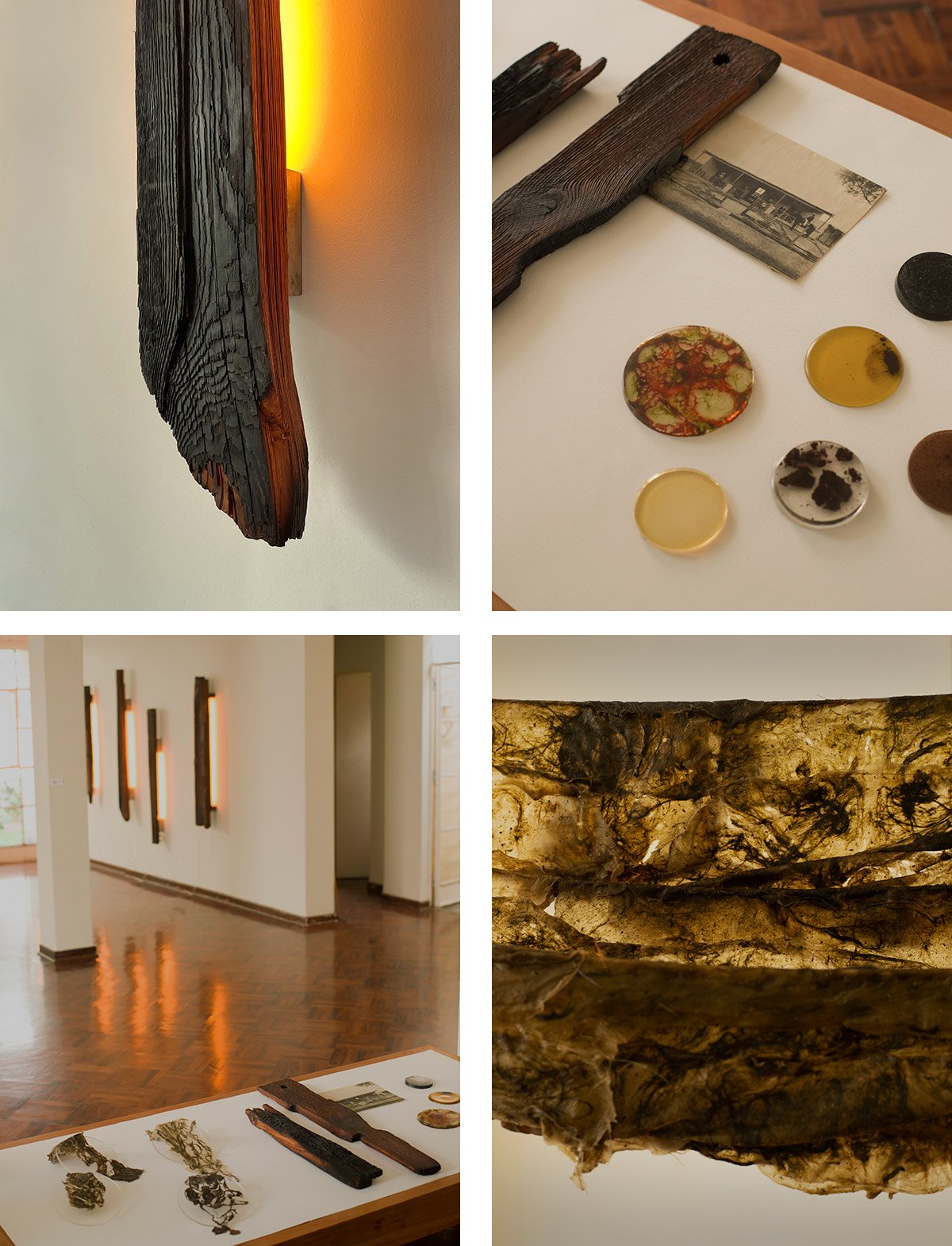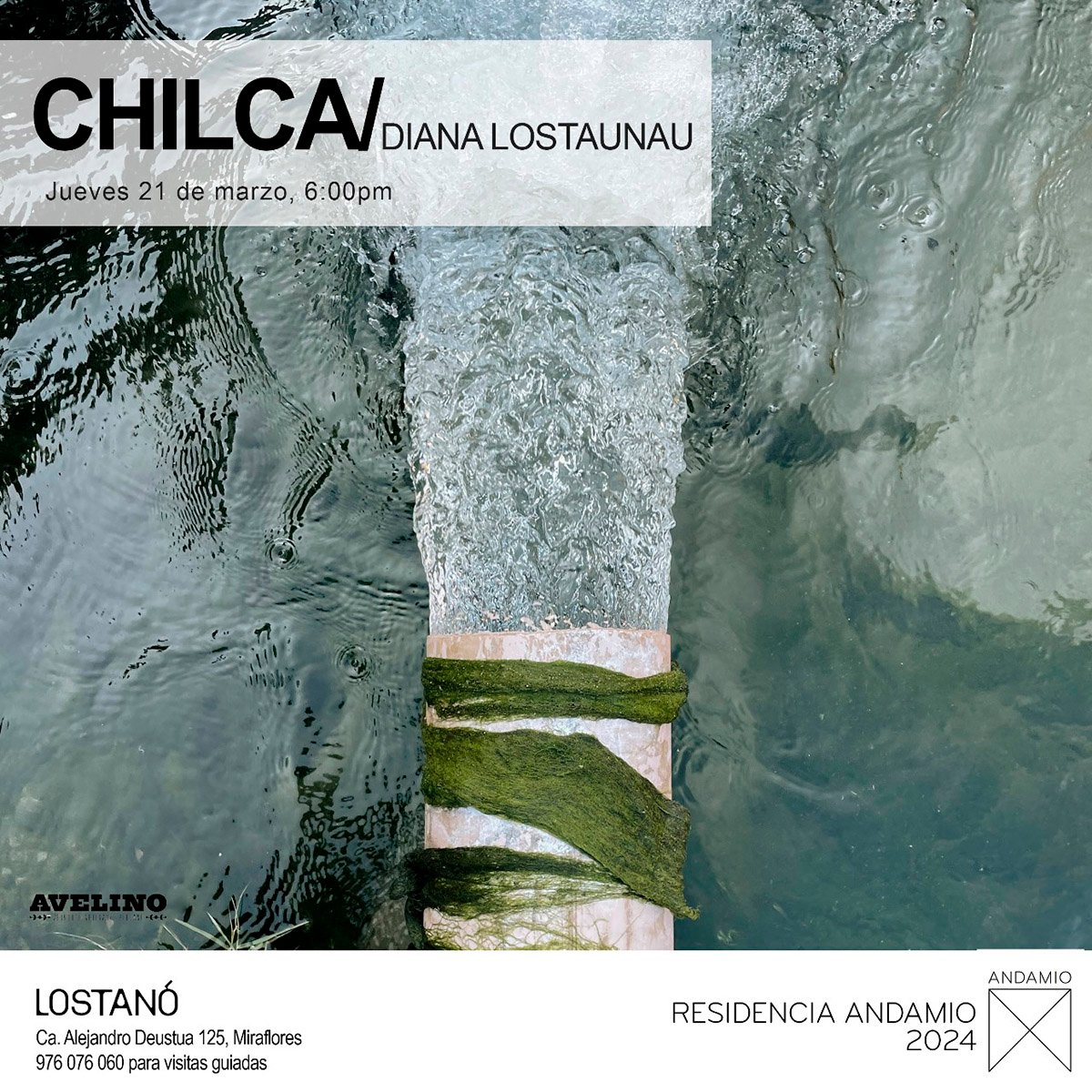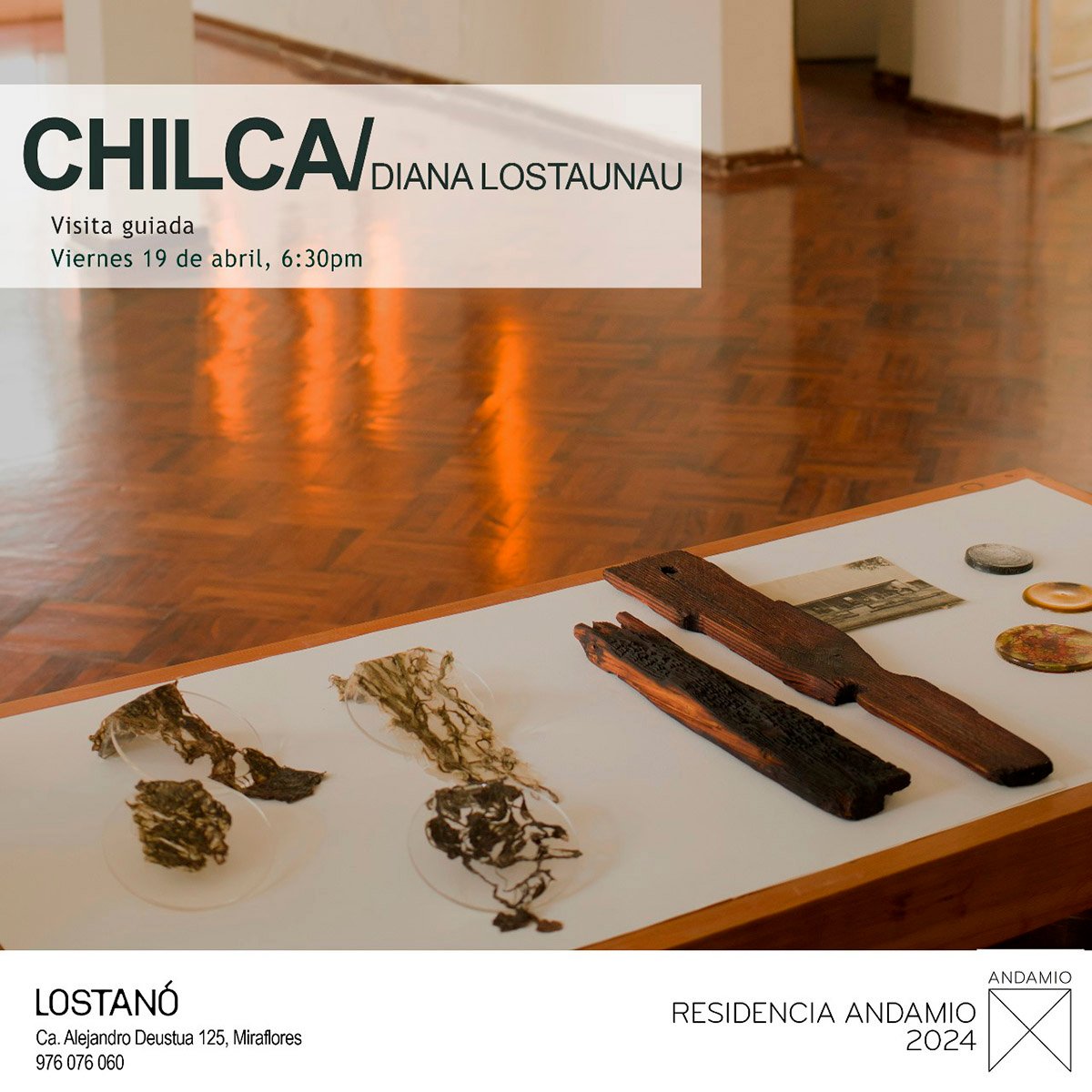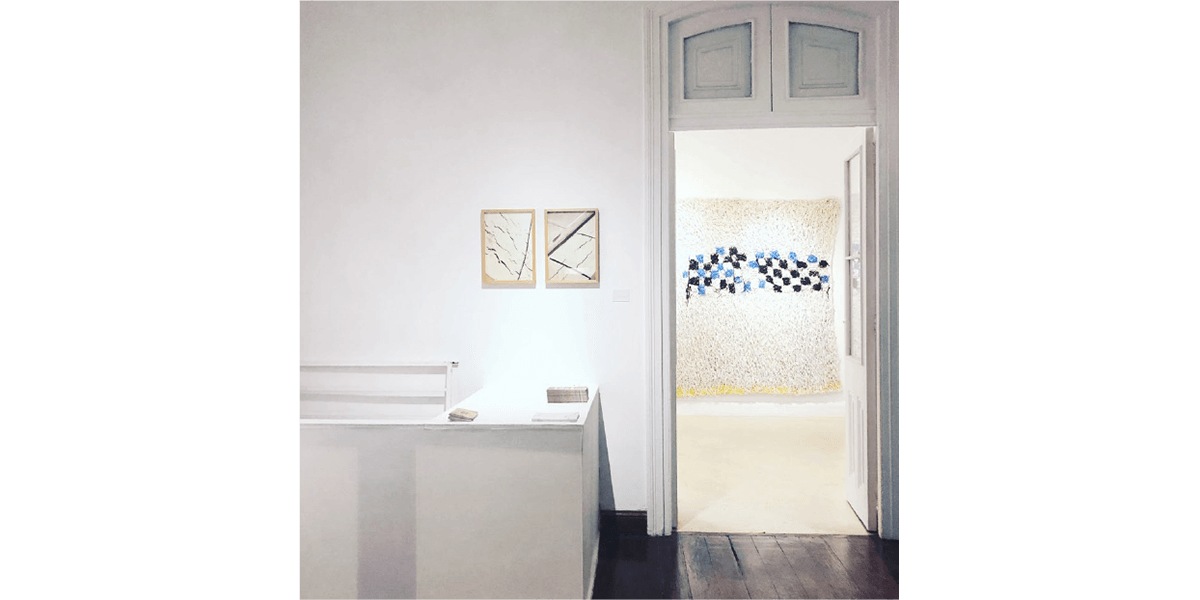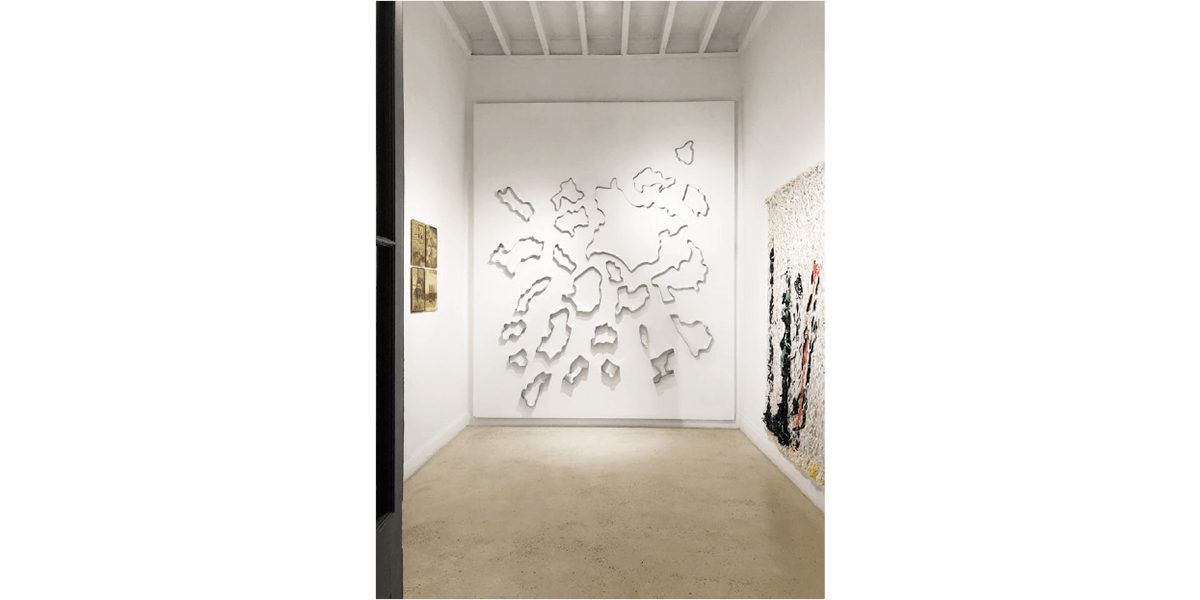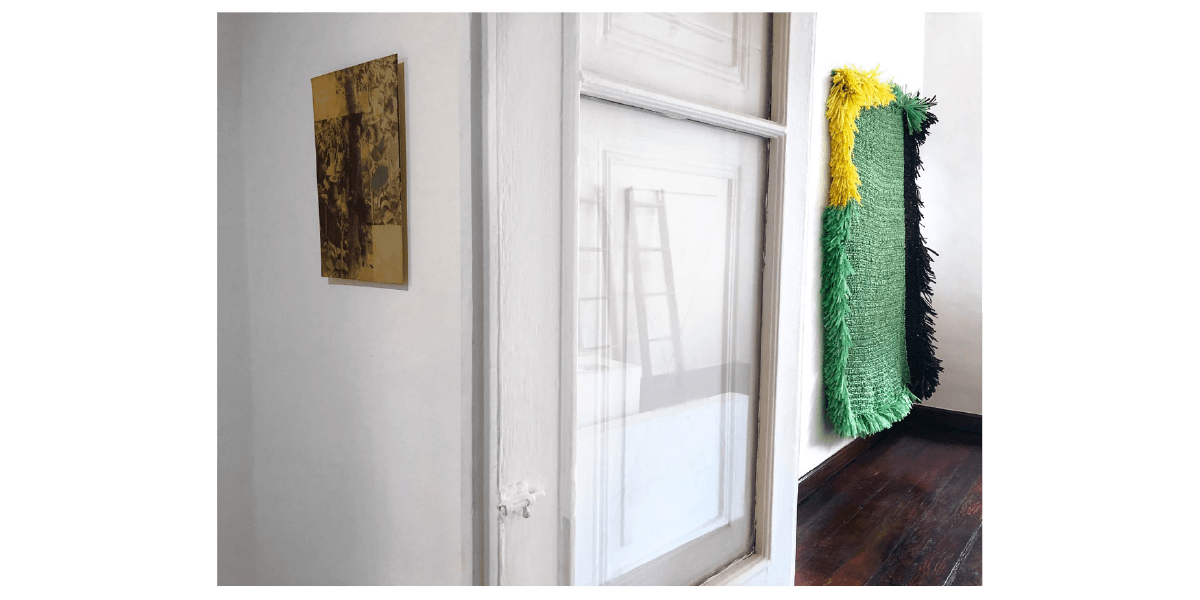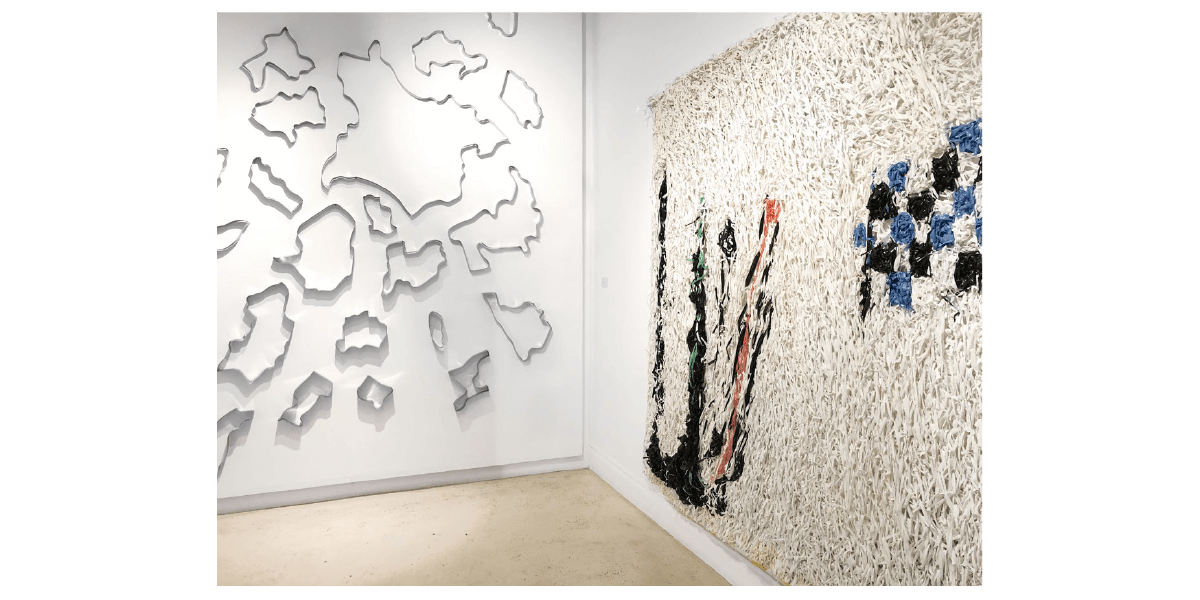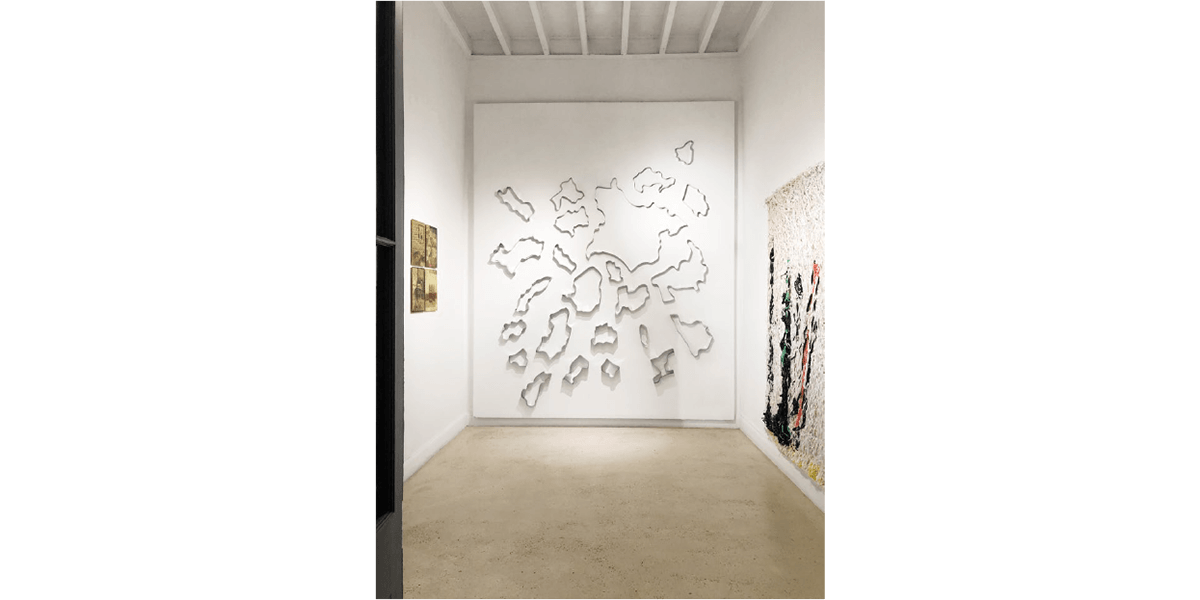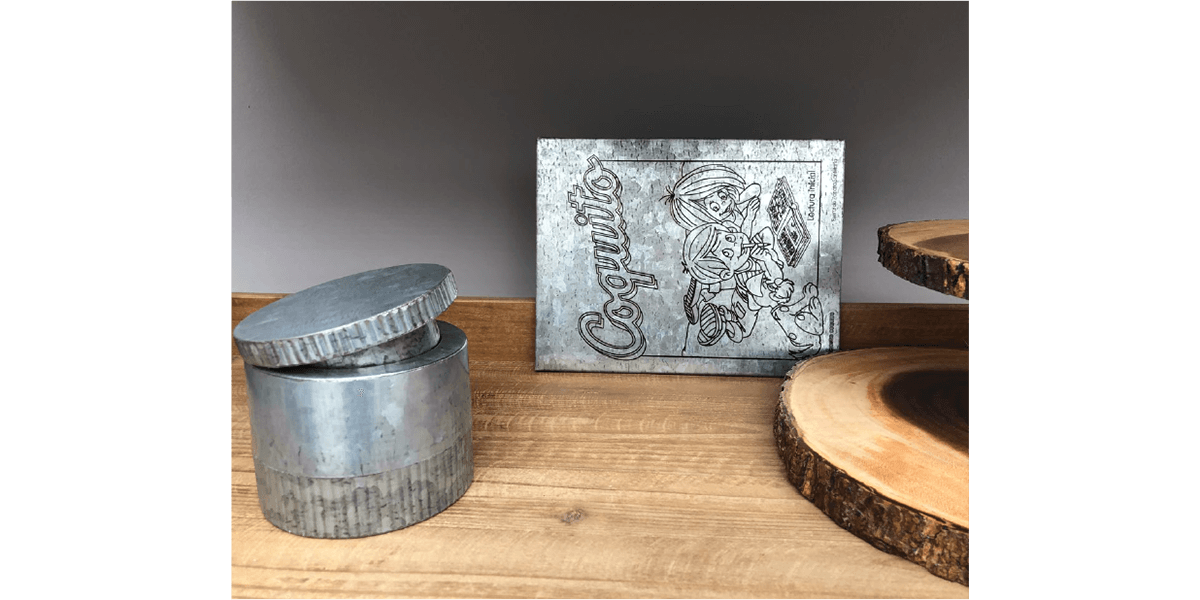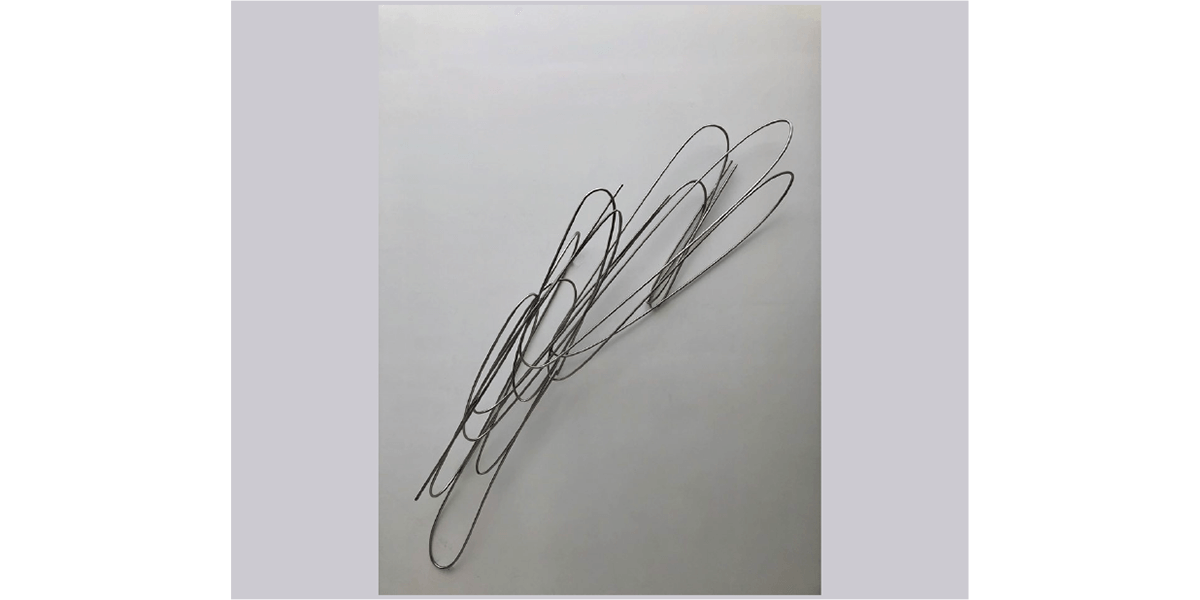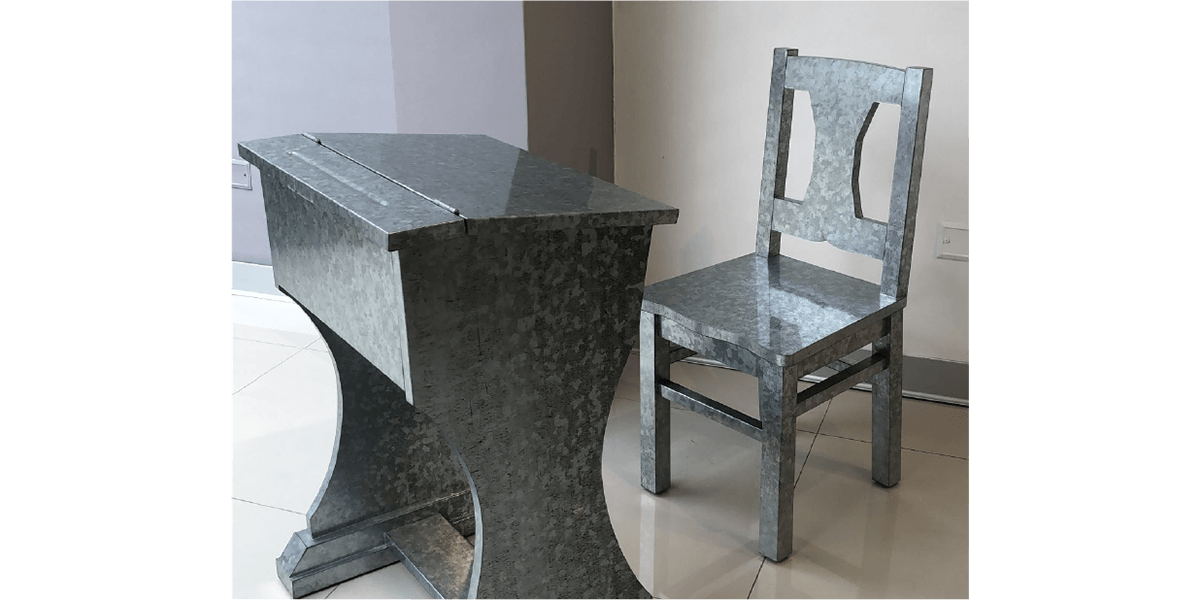- ABOUT US
- MICAELA ALJOVÍN
- NANI CÁRDENAS
- WORKS
- EXHIBITIONS
- STUDIO
- RESIDENCE ANDAMIO
- CONTACT
- ESP / ENG


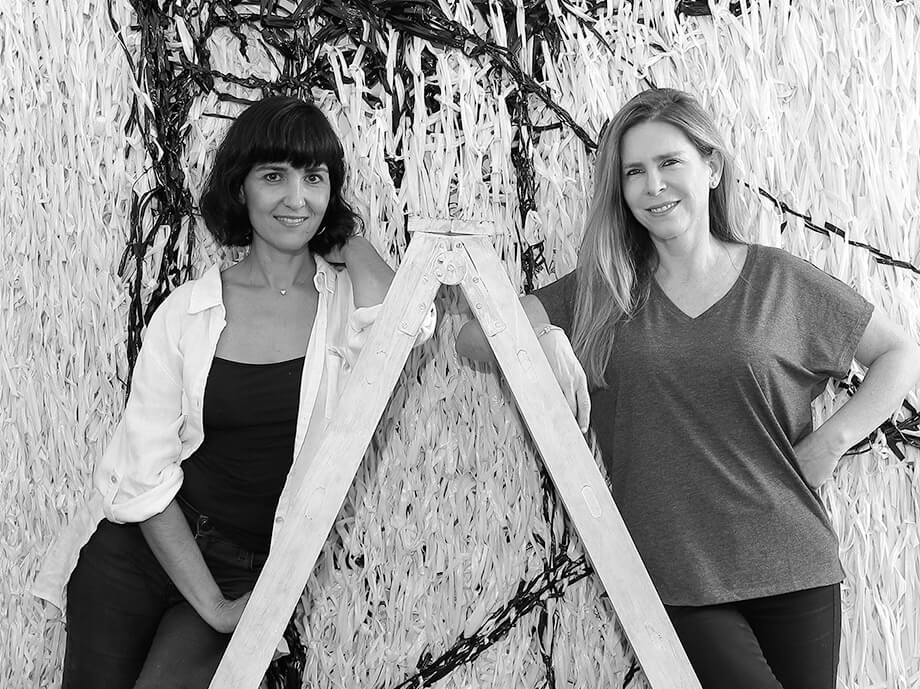
We are an art collective funded in 2019 by the Peruvian artists Micaela Aljovín and Nani Cárdenas, with the purpose of creating a community and supporting projects with a social responsibility.
We conceived the scaffolding as a symbol of construction, playfulness and visual art. Thus, based on the concepts of memory and identity, we developed work through research, exploration and experimentation with industrial, discarded and everyday use materials.
We have a self-managed space in which the workshop and the exhibition space coexist. Since this is an environment that allows the exchange of ideas and interdisciplinary collaboration, we have started - in June 2020 - a residency program for artists.
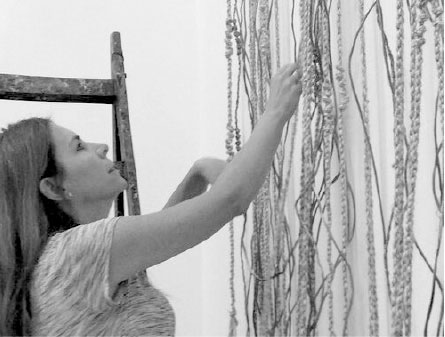
MICAELA ALJOVÍN
(Lima, 1969)
Studied Arts at the Corriente Alterna School of Visual Arts and graduated with a Silver Medal. Her work evokes Peruvian social history through the exercise of memory - which addresses the everyday, the domestic,
education and the conception of the Nation as construction. For this reason, many of her proposals are installations composed of fractional parts, which allude to the possibility of integration and
construction of a whole with its parts. The choice of materials responds to Aljovín’s process of searching and experimentation, thus metal and adobe take on a symbolic dimension when transformed. Likewise, her work responds to a
special interest in artistic processes of a relational nature.

NANI CÁRDENAS
(Lima, 1969)
Sculptor graduated from the Pontificia Universidad Católica del Peru, where she graduated with the First place and the Critics’ Prize (1993). Her work revolves around the body and the territory, and is made up
of aerial drawings, embroidered and sculptural portraits, installations and collaborative projects that find their own materials and expressive means. In the past few years she has sought to include materials discarded by
industry and metals such as copper, bronze, nickel, and stainless steel. Fabric is not only a constant in her work, but – through lines linked to the drawing – has allowed her to thread her own poetics, exploring infinite
variables associated with language.

ANDAMIO
We are an art collective funded in 2019 by the Peruvian artists Micaela Aljovín and Nani Cárdenas, with the purpose of creating a community and supporting projects with a social responsibility.
We conceived the scaffolding as a symbol of construction, playfulness and visual art. Thus, based on the concepts of memory and identity, we developed work through research, exploration and experimentation with industrial, discarded and everyday use materials.
We have a self-managed space in which the workshop and the exhibition space coexist. Since this is an environment that allows the exchange of ideas and interdisciplinary collaboration, we have started - in June 2020 - a residency program for artists.

(Lima, 1969)
Studied Arts at the Corriente Alterna School of Visual Arts and graduated with a Silver Medal. Her work evokes Peruvian social history through the exercise of memory - which addresses the everyday, the
domestic, education and the conception of the Nation as construction. For this reason, many of her proposals are installations composed of fractional parts, which allude to social division, as well as the possibility of
integration and construction of a whole with its parts. The choice of materials responds to Aljovín’s process of searching and experimentation, thus metal and adobe take on a symbolic dimension when transformed. Likewise,
her work responds to a special interest in artistic processes of a relational nature.

(Lima, 1969)
Estudió Artes en la Escuela Superior de Artes Visuales Corriente Alterna y se graduó con Medalla de Plata. Su obra evoca a la historia social peruana a través del ejercicio de memoria, que aborda lo
cotidiano, lo doméstico, la educación y la concepción de la Nación como construcción. Por ello, muchas de sus propuestas son instalaciones compuestas por piezas fraccionadas que aluden a la división social, a la vez que a la
posibilidad de integración.

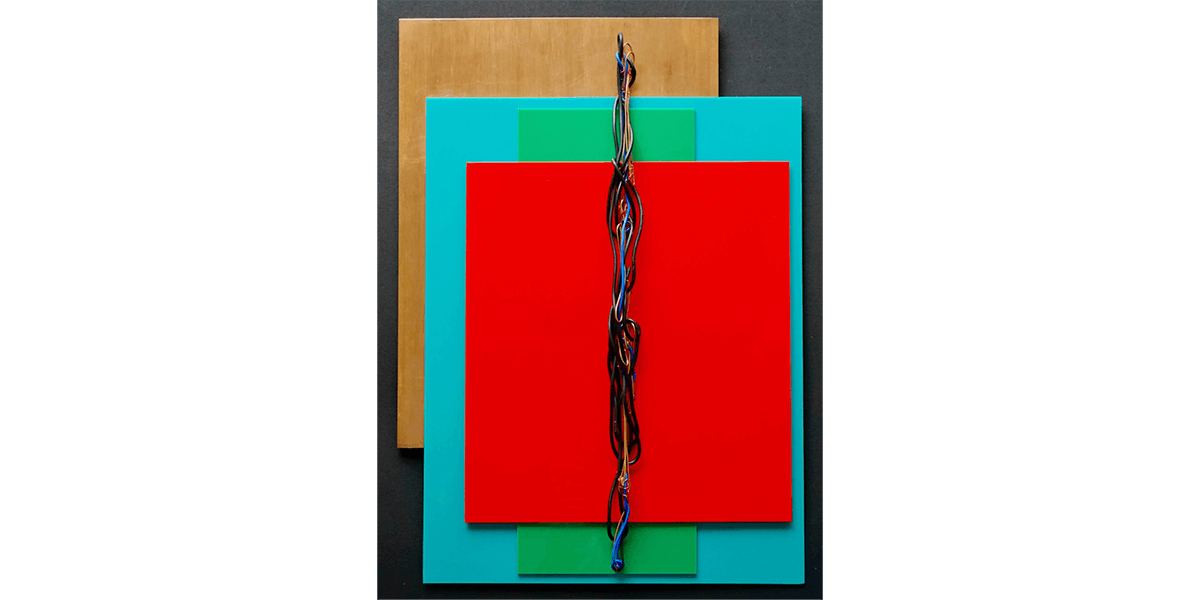
ETERNO FEMENINO
2020
Construction woven in copper and acrylic
20 43/64 x 14 61/64 x 2 23/64 in
NÚCLEO. Contemporary Visual Art. Art Motiv Magazine.
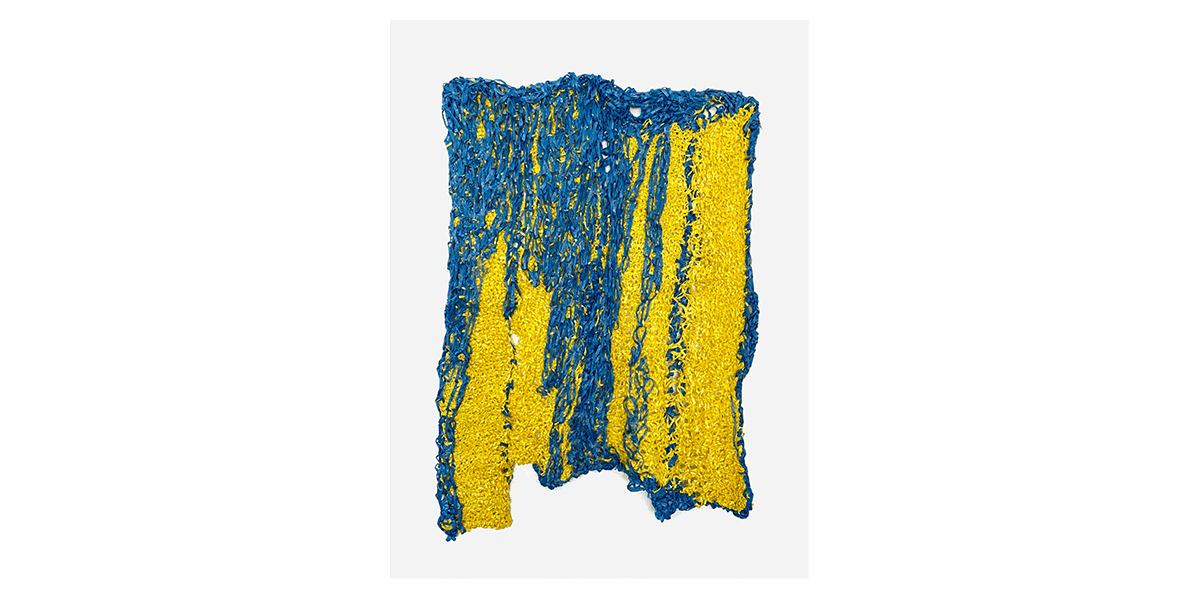
PLUMAJE AZUL Y AMARILLO
2019
Raffia, bronze
70 55/64 x 47 1/4 x 1 31/32 in

PLUMAJE AZUL Y AMARILLO (detail)
2019
Raffia, bronze
70 55/64 x 47 1/4 x 1 31/32 in
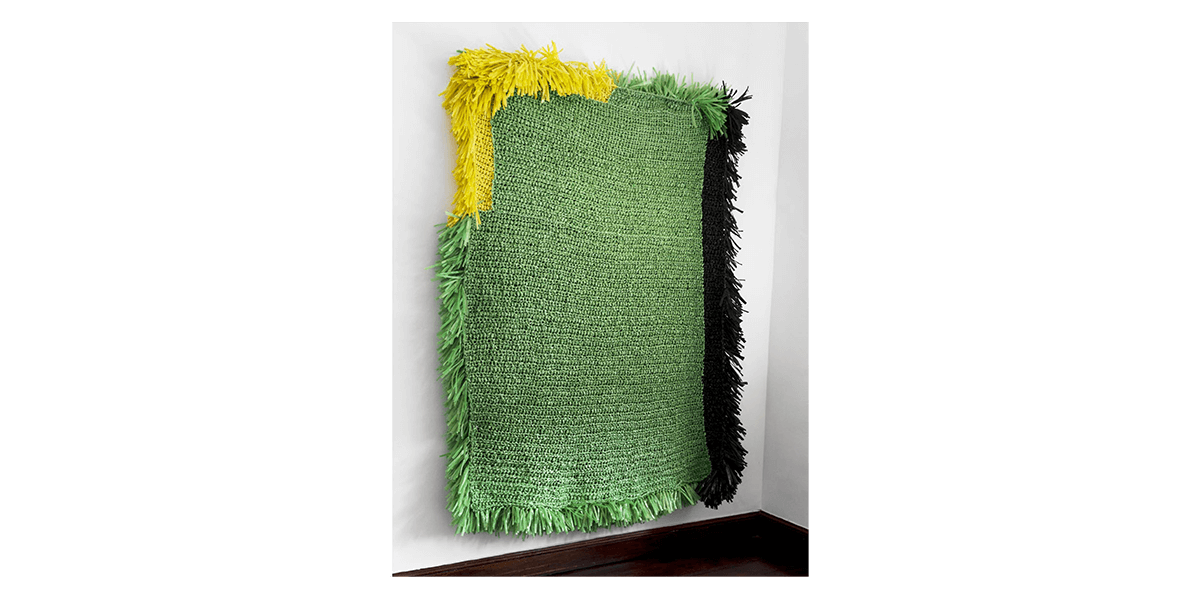
PLUMAJE VERDE
2019
Woven raffia
59 1/16 x 78 47/64 x 2 3/4 in
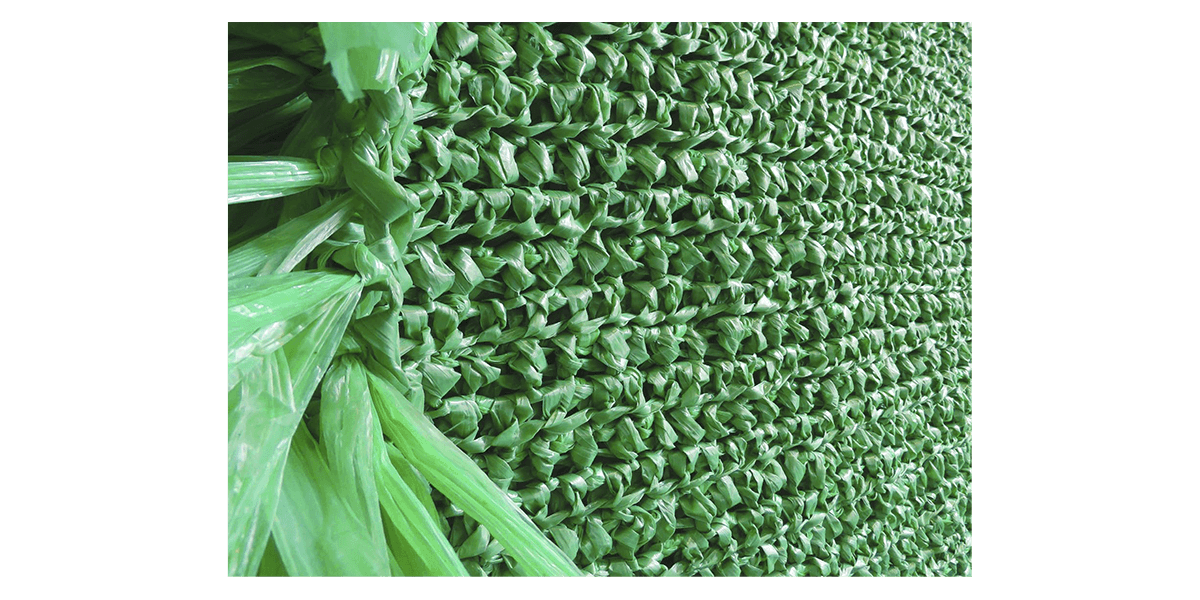
PLUMAJE VERDE (detail)
2019
Woven raffia
59 1/16 x 78 47/64 x 2 3/4 in
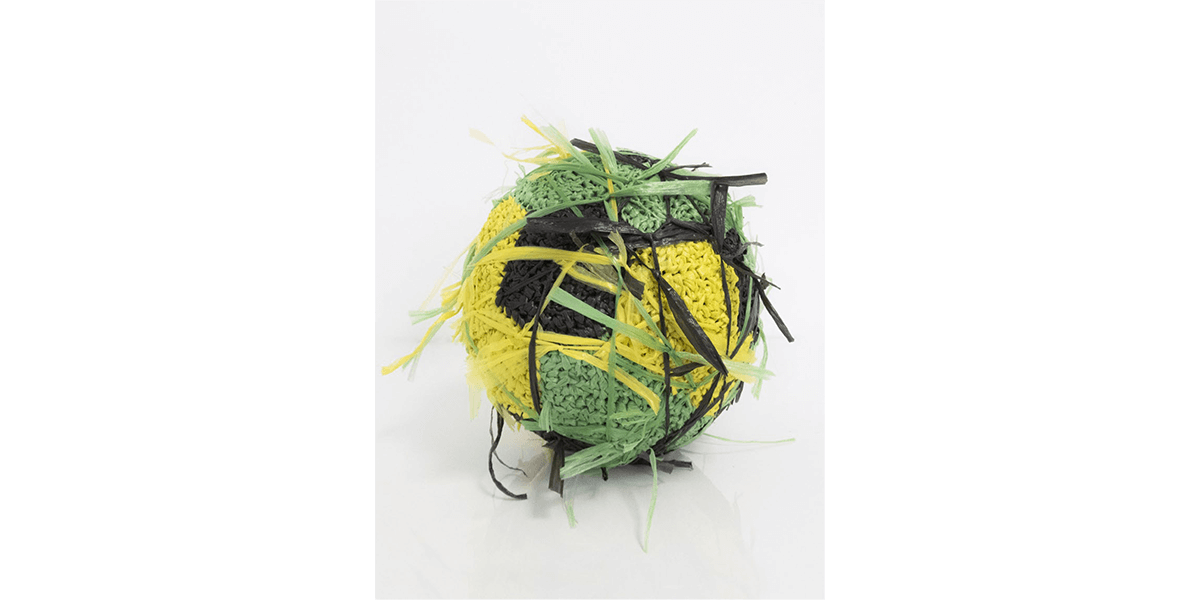
PELOTA ANDAMIO
2019
Woven raffia
8 6/7 x 8 6/7 x 8 6/7 inches
Subasta benéfica León Pinelo, 2019
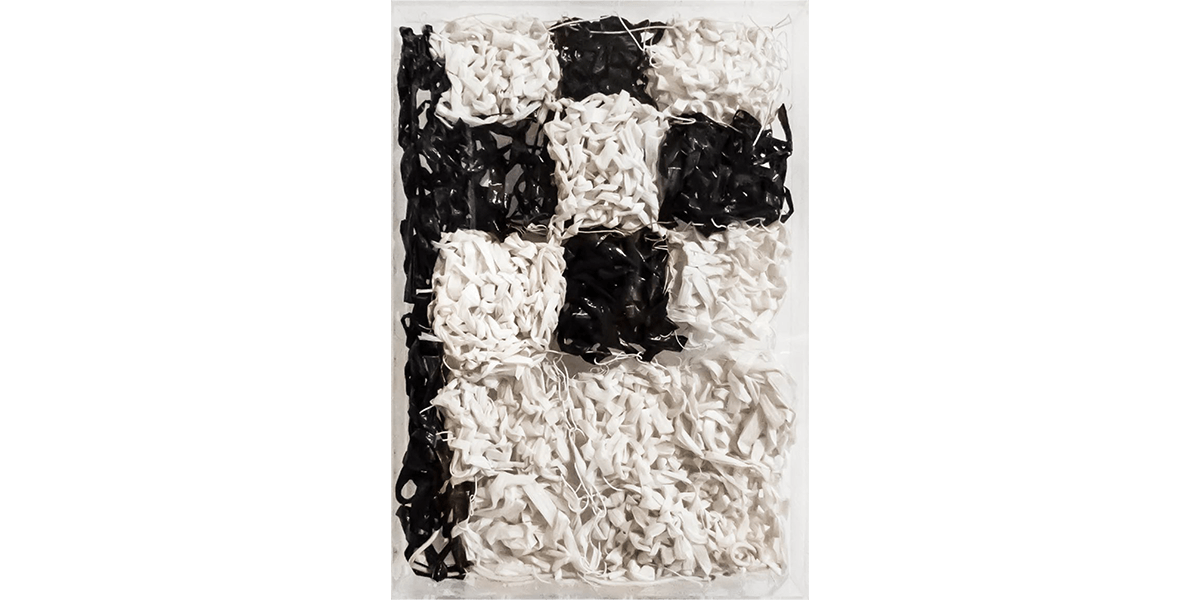
CONSTRUCCIÓN EN PEQUEÑO FORMATO (B/N)
2019
Woven raffia and insulated copper in acrylic box
18 5/16 x 12 19/32 x 1 49/64 in each
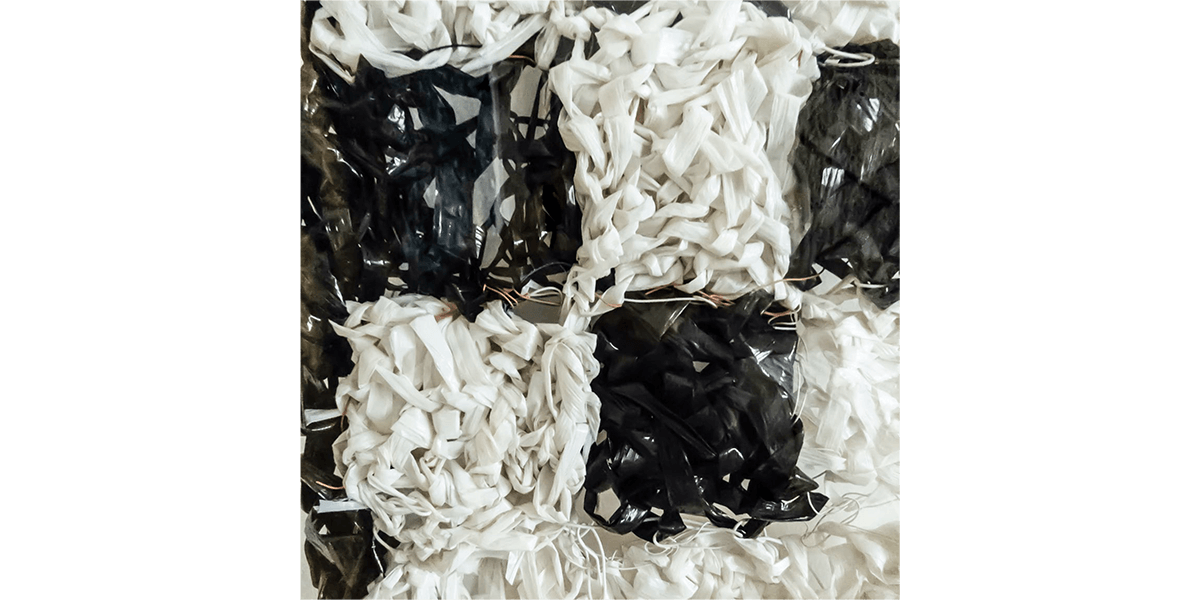
CONSTRUCCIÓN EN PEQUEÑO FORMATO - B/N (detail)
2019
Woven raffia and insulated copper in acrylic box
18 5/16 x 12 19/32 x 1 49/64 in each
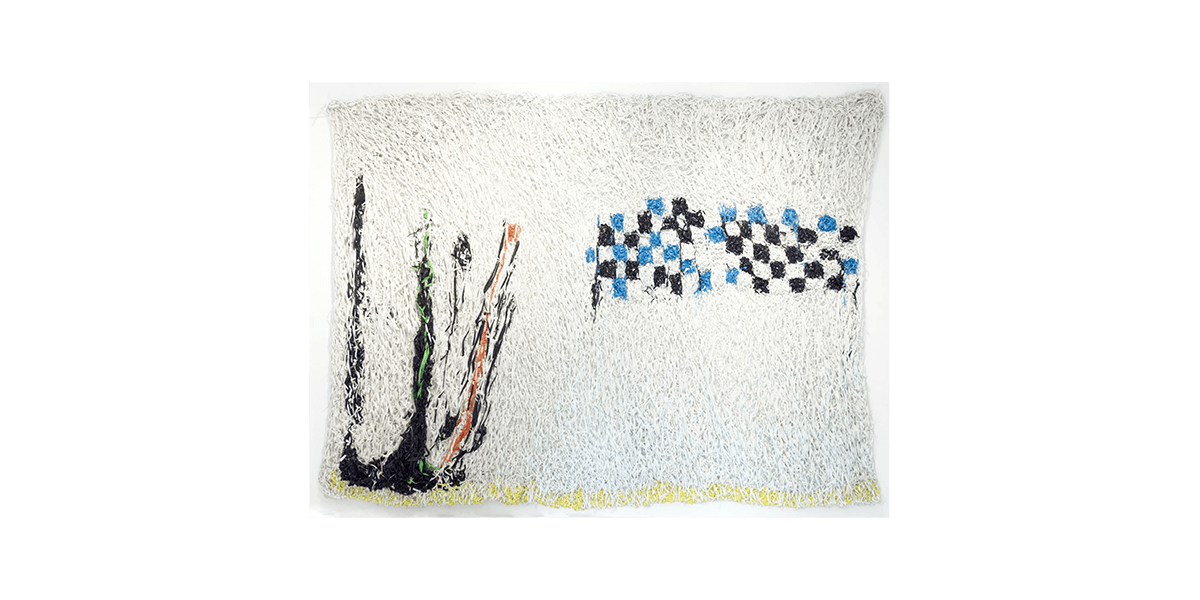
DIÁLOGO
2019
Woven raffia
118 7/64 x 95 43/64 x 1 37/64 in

DIÁLOGO (detail)
2019
Woven raffia
118 7/64 x 95 43/64 x 1 37/64 in
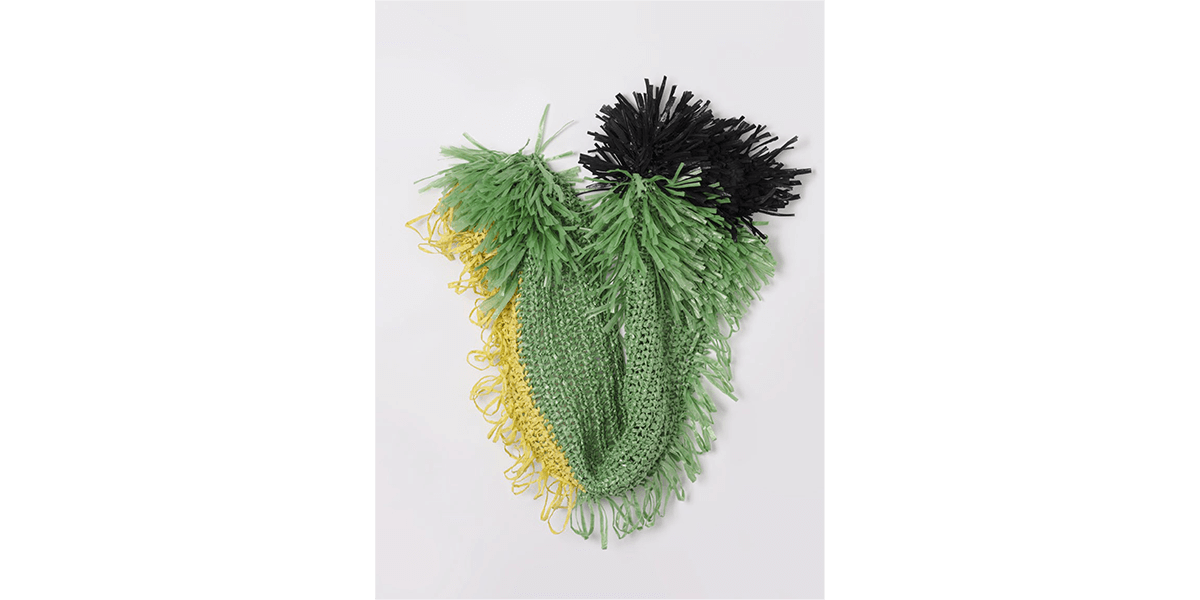
TRÓPICO
2019
Woven raffia
47 1/4 x 31 1/2 x 2 3/4 in

TRÓPICO (detail)
2019
Woven raffia
47 1/4 x 31 1/2 x 2 3/4 in

ANDAMIO
2019
Woven raffia
125 63/64 x 92 33/64 x 2 3/4 inv
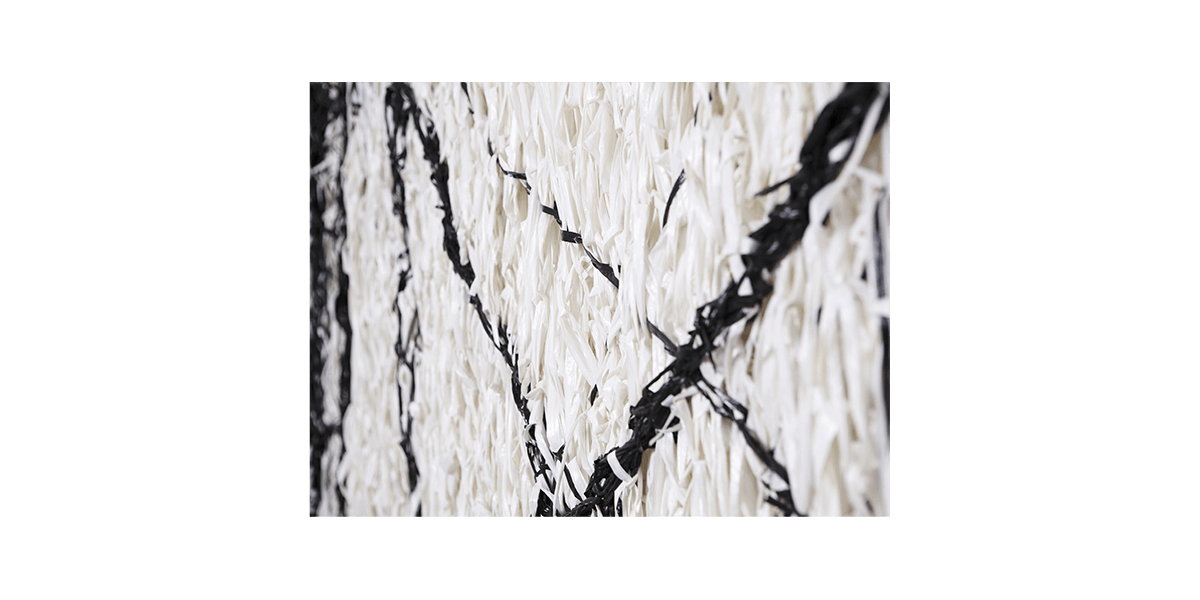
ANDAMIO (detail)
2019
Woven raffia
125 63/64 x 92 33/64 x 2 3/4 inv

ESCALERA
2019
Woven raffia, acrylic and copper
133 55/64 x 27 9/16 x 3 5/32 in
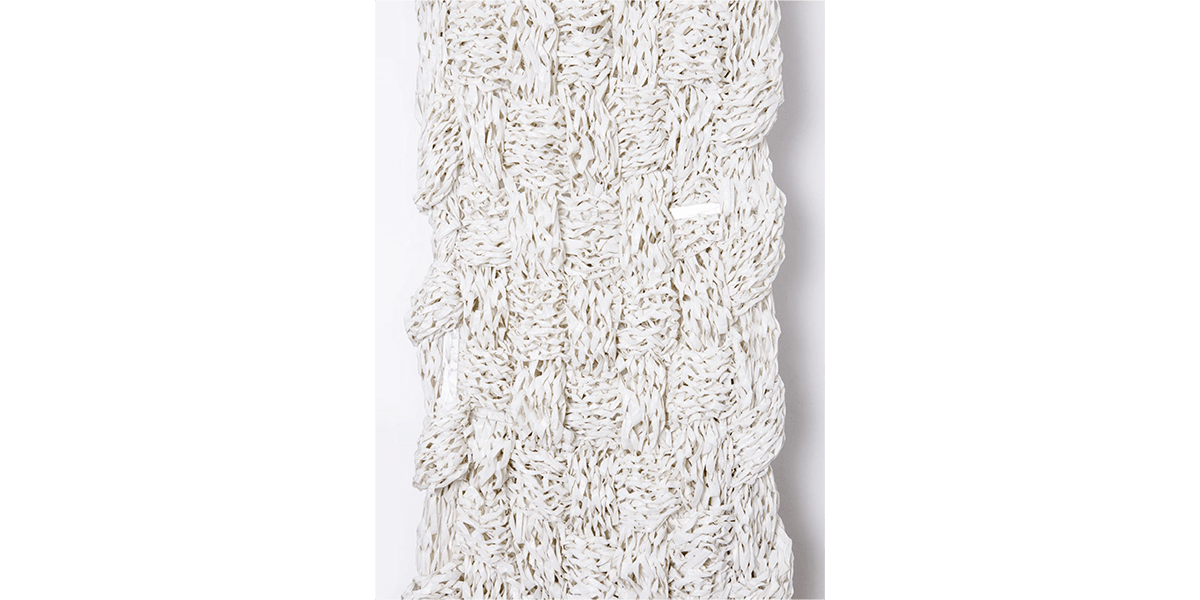
ESCALERA (detail)
2019
Woven raffia, acrylic and copper
133 55/64 x 27 9/16 x 3 5/32 in
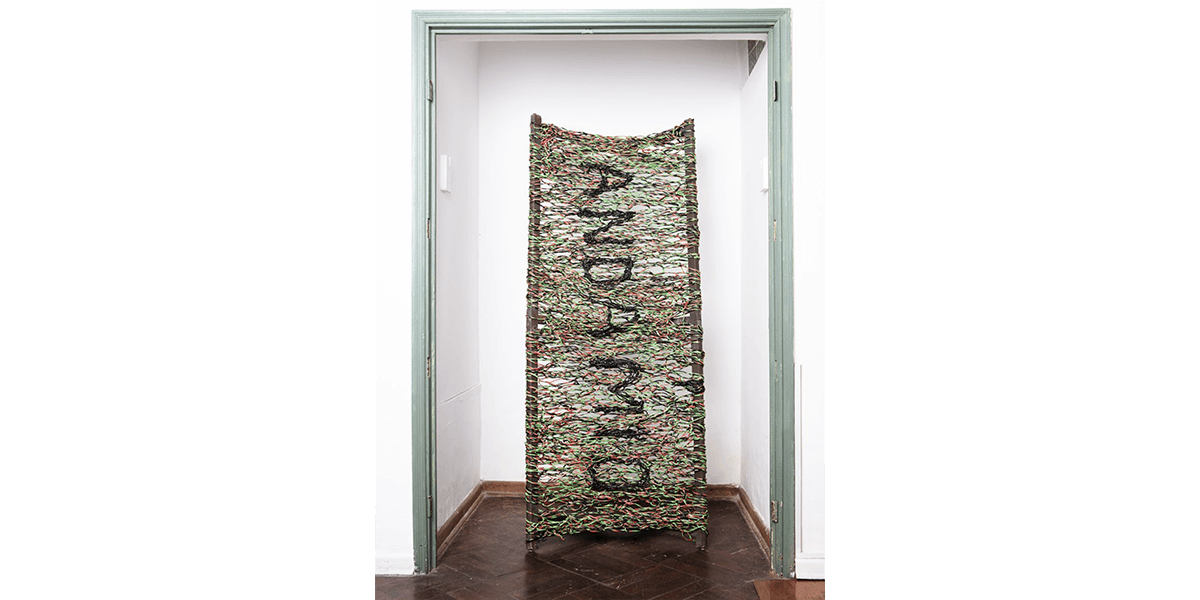
CAMILLA
2019
Woven raffia on XX century war stretcher
75 63/64 x 27 9/16 x 17 23/32 in

CAMISETAS
2019
Silkscreen printing on cotton t-shirts
51 3/16 x 25 19/32 in

COLUMNS (views)
2021
and 1 module of 40 cm x 40 cm x variable height
40 cm x 40 cm x 24 cm, and 1 module of 40 cm
x 40 cm x variable height
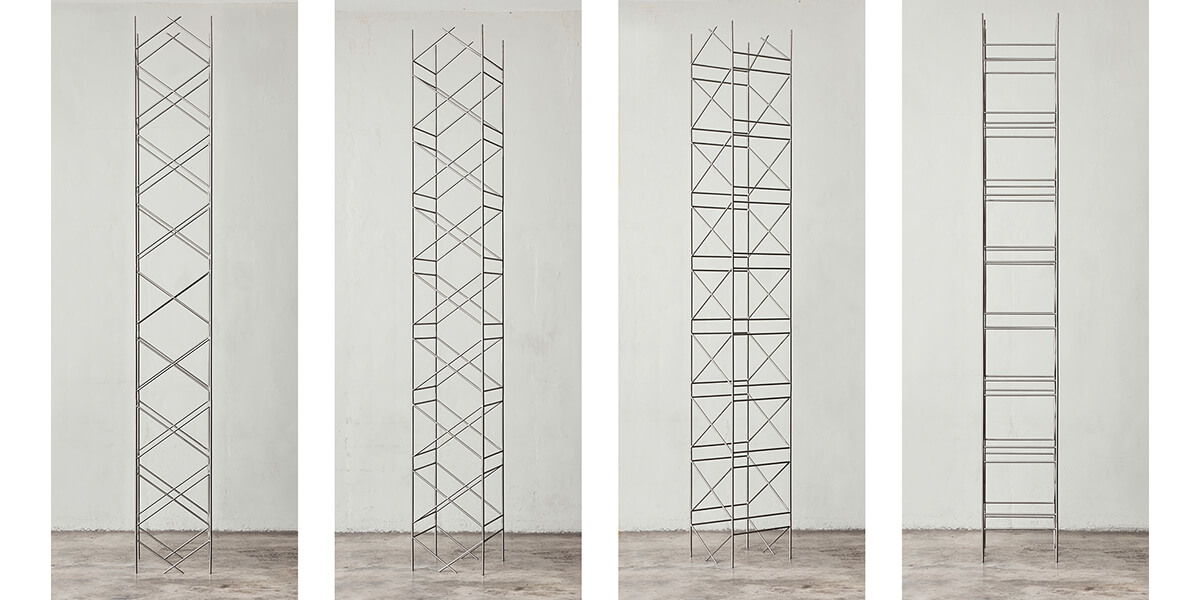
COLUMNS (installation)
2021
and 1 module of 40 cm x 40 cm x variable height
40 cm x 40 cm x 24 cm, and 1 module of 40 cm
x 40 cm x variable height
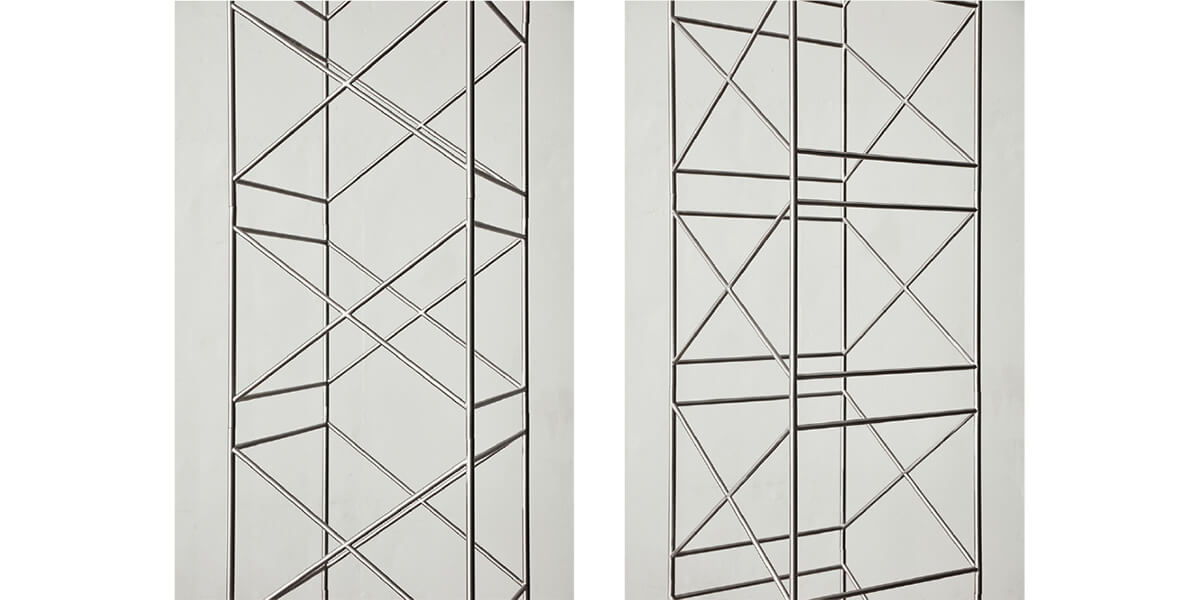
COLUMNS (detail)
2021
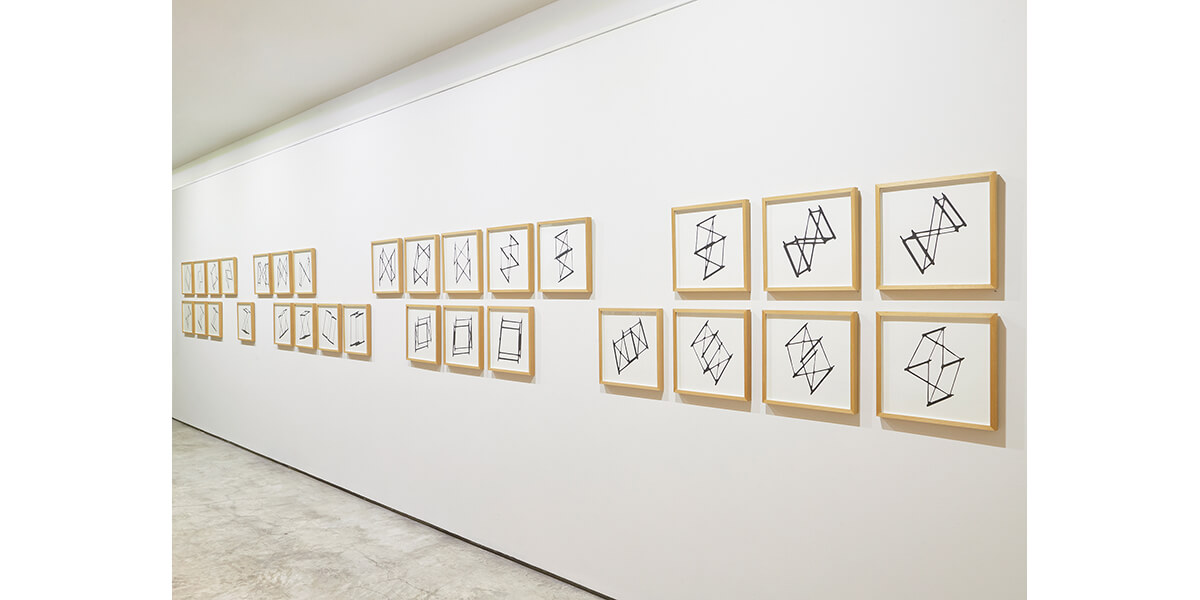
SHADOWS (installation)
2021
Serigraphs (30) of Tuff paper of 320 g.
framed in cedar
37.4 cm x 37.4 cm x 3 cm e/o

SHADOWS (details)
2021
Serigraphs (30) of Tuff paper of 320 g.
framed in cedar
37.4 cm x 37.4 cm x 3 cm e/o
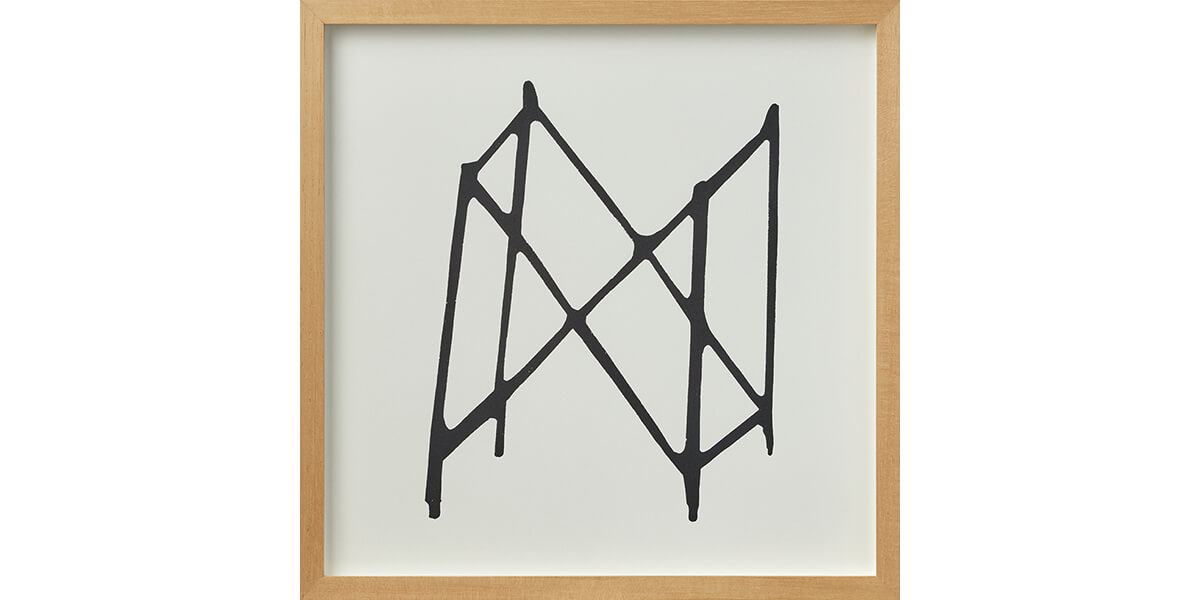
SHADOWS (details)
2021
Serigraphs (30) of Tuff paper of 320 g.
framed in cedar
37.4 cm x 37.4 cm x 3 cm e/o
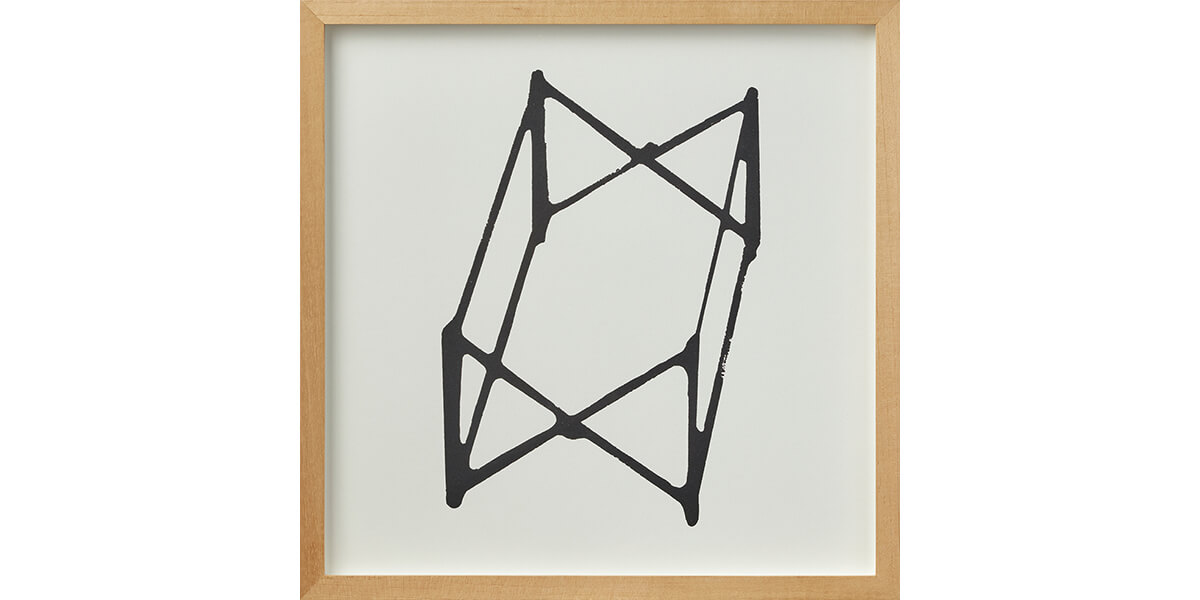
SHADOWS (details)
2021
Serigraphs (30) of Tuff paper of 320 g.
framed in cedar
37.4 cm x 37.4 cm x 3 cm e/o
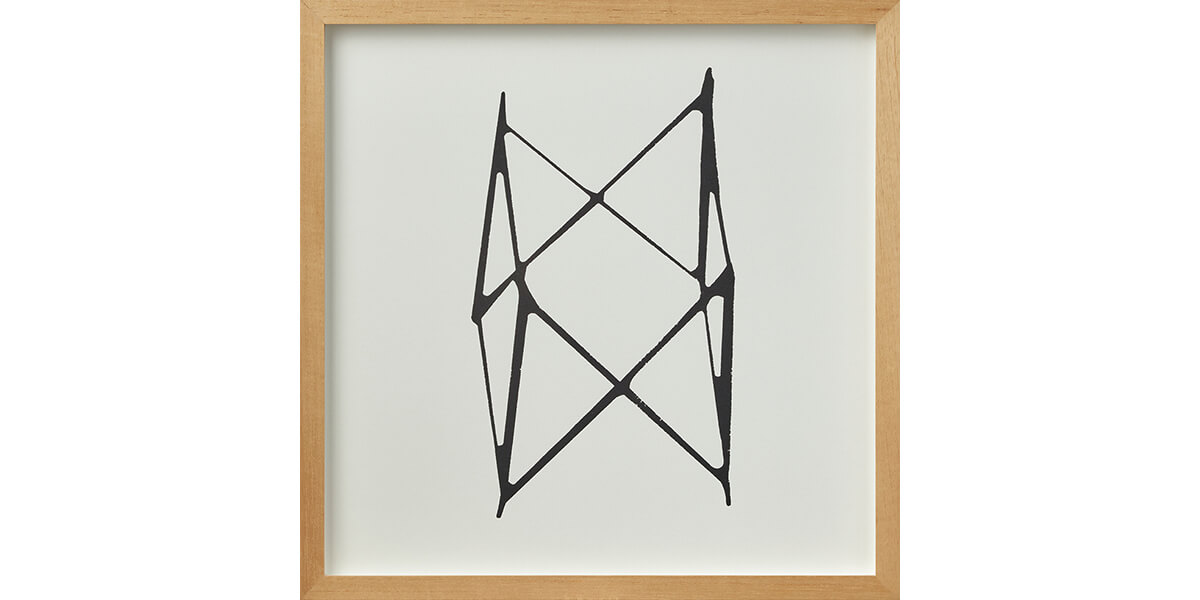
SHADOWS (details)
2021
Serigraphs (30) of Tuff paper of 320 g.
framed in cedar
37.4 cm x 37.4 cm x 3 cm e/o
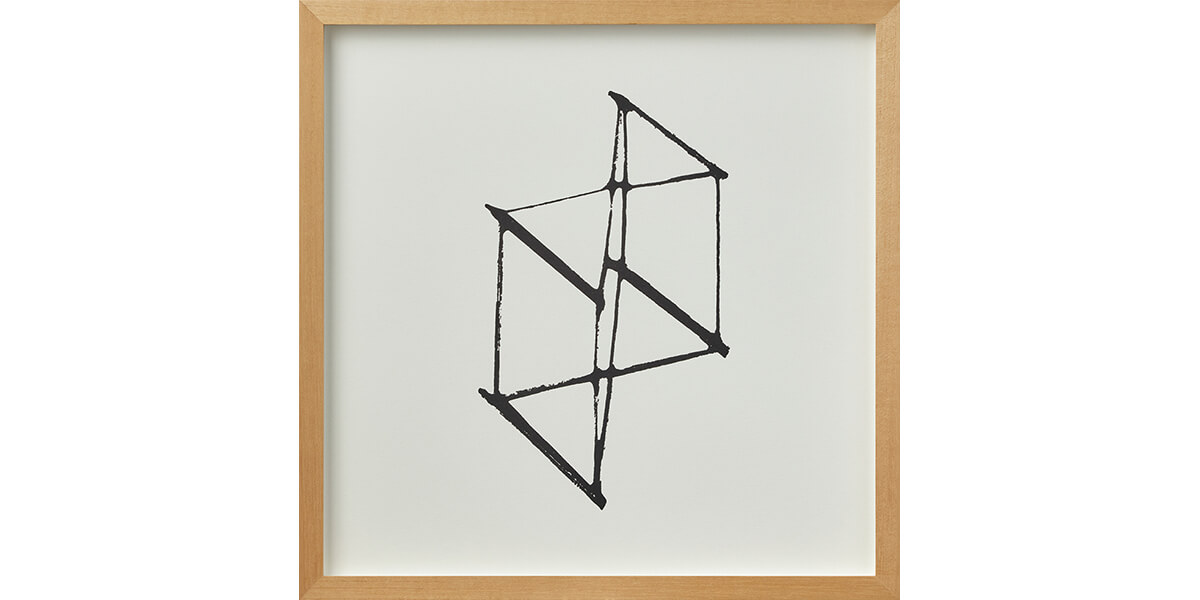
SHADOWS (details)
2021
Serigraphs (30) of Tuff paper of 320 g.
framed in cedar
37.4 cm x 37.4 cm x 3 cm e/o

SHADOWS (details)
2021
Serigraphs (30) of Tuff paper of 320 g.
framed in cedar
37.4 cm x 37.4 cm x 3 cm e/o

SHADOWS (details)
2021
Serigraphs (30) of Tuff paper of 320 g.
framed in cedar
37.4 cm x 37.4 cm x 3 cm e/o
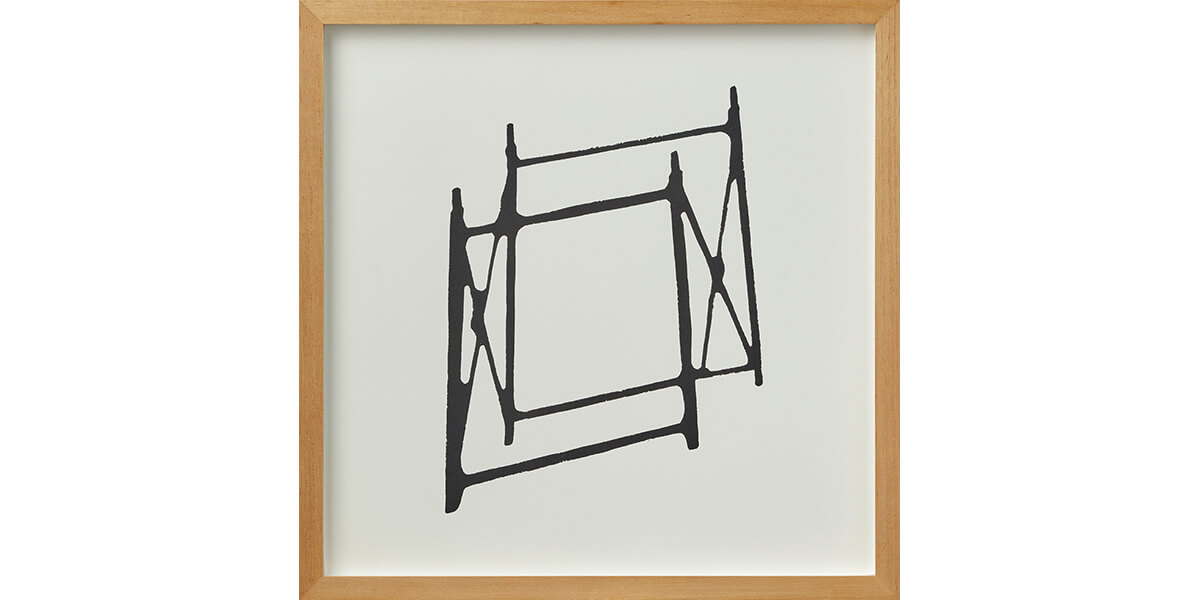
SHADOWS (details)
2021
Serigraphs (30) of Tuff paper of 320 g.
framed in cedar
37.4 cm x 37.4 cm x 3 cm e/o
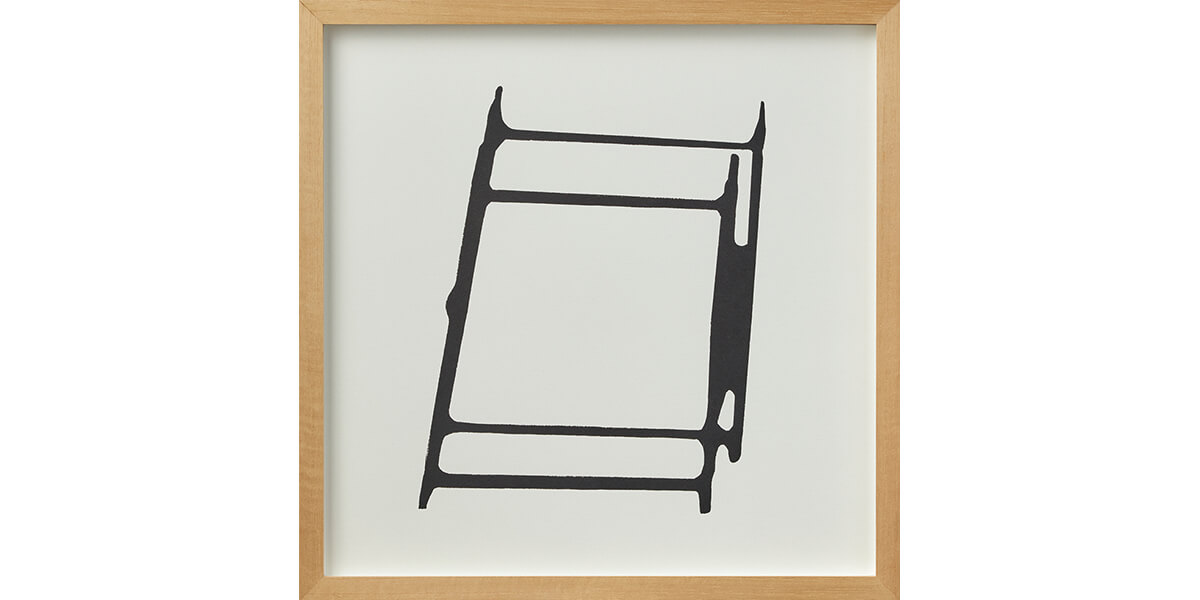
SHADOWS (details)
2021
Serigraphs (30) of Tuff paper of 320 g.
framed in cedar
37.4 cm x 37.4 cm x 3 cm e/o
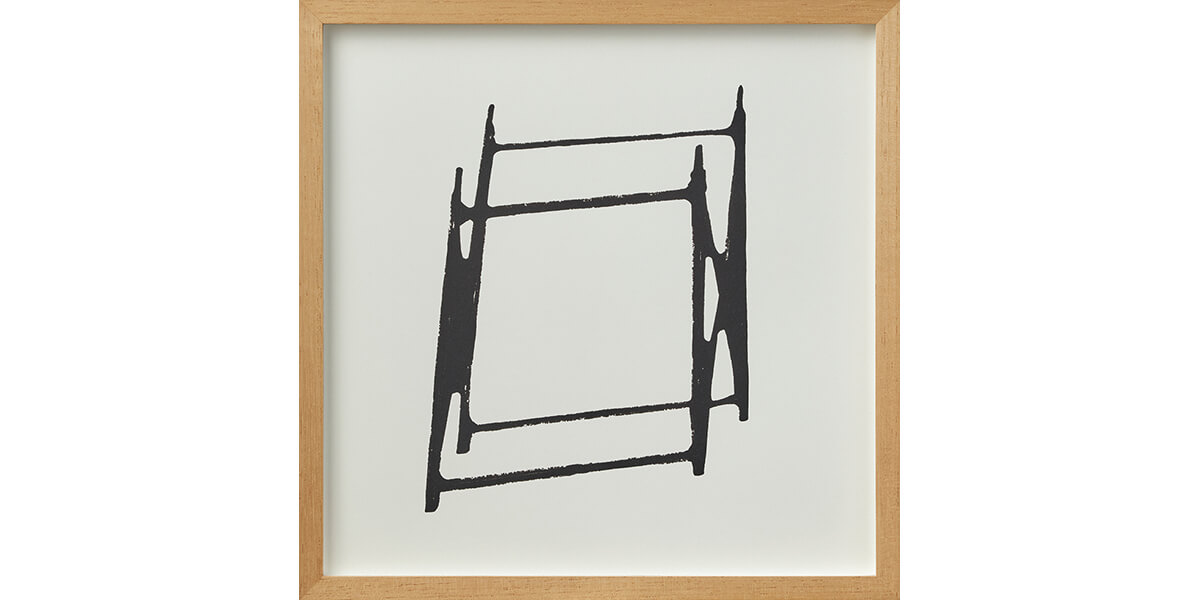
SHADOWS (details)
2021
Serigraphs (30) of Tuff paper of 320 g.
framed in cedar
37.4 cm x 37.4 cm x 3 cm e/o
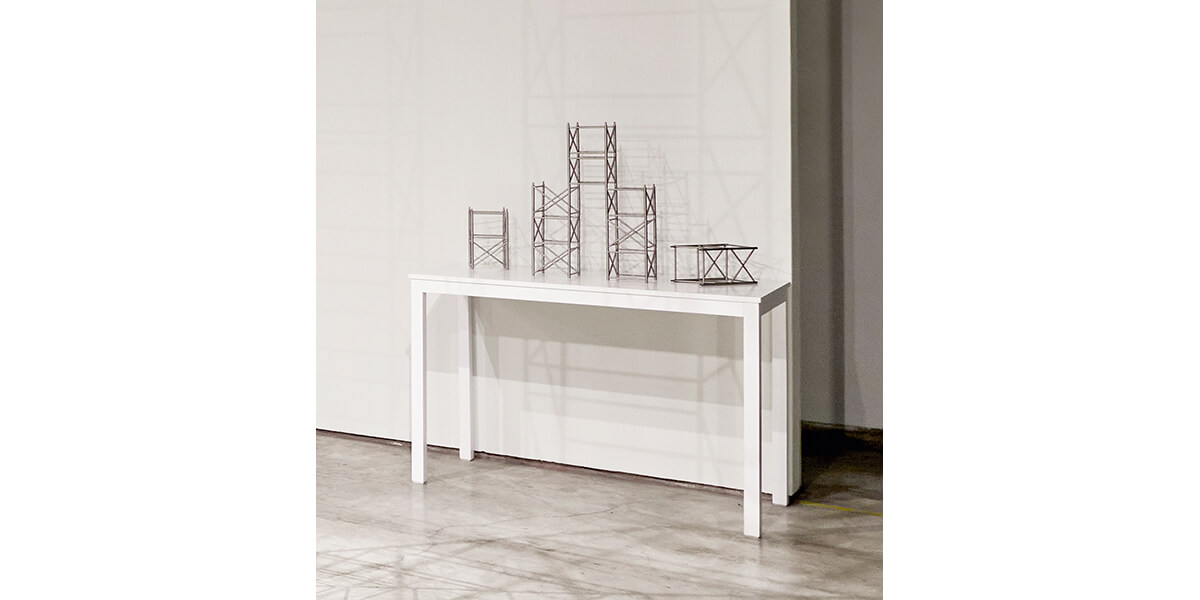
MODULES (installation)
2021
Stainless steel modules (18)
14 cm x 14 cm x 13 cm e/o
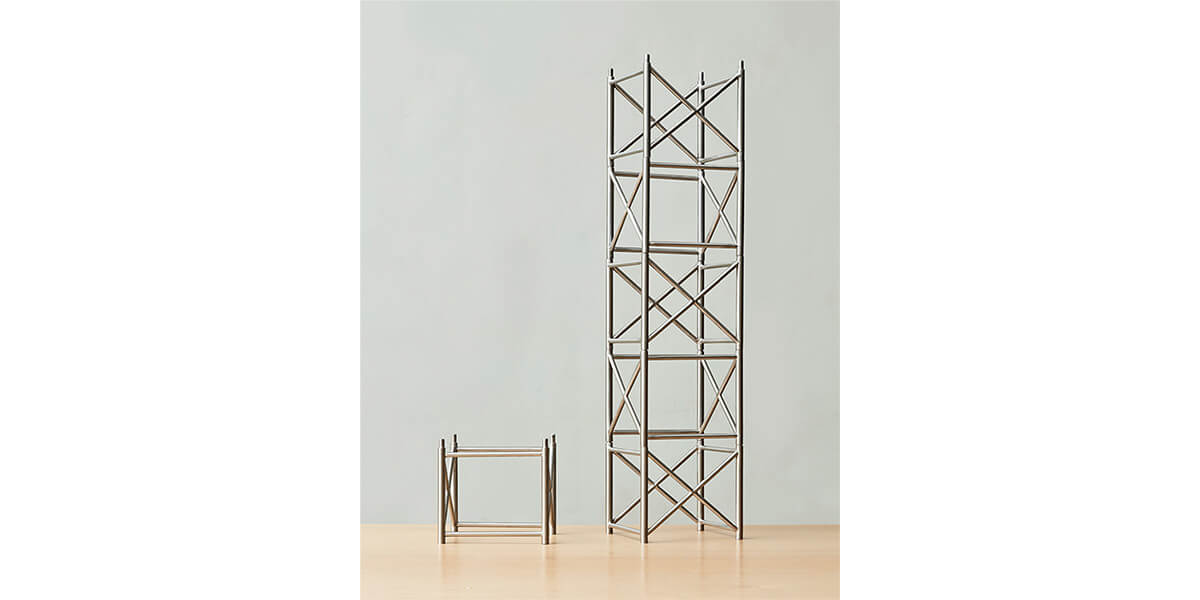
MODULES
2021
Stainless steel modules (18)
14 cm x 14 cm x 13 cm e/o
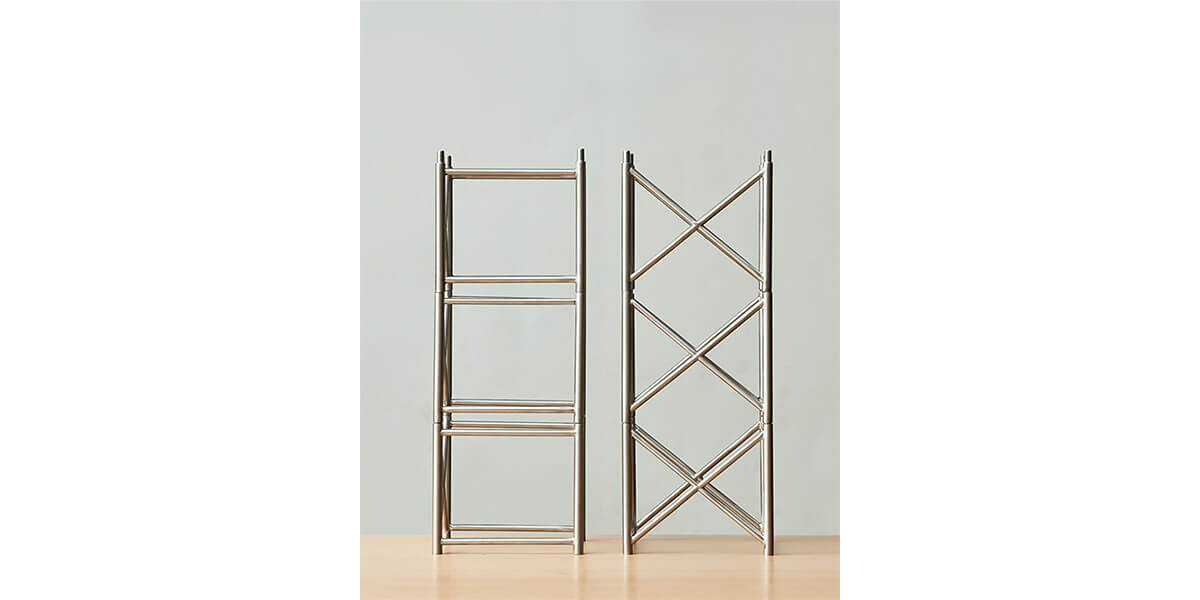
MODULES
2021
Stainless steel modules (18)
14 cm x 14 cm x 13 cm e/o
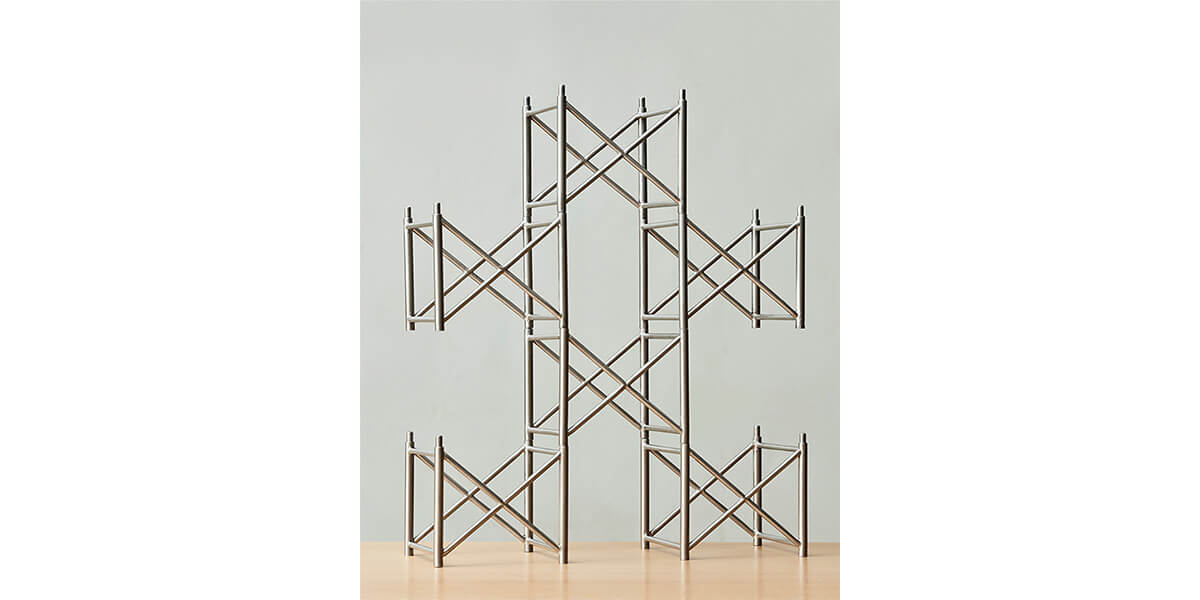
MODULES
2021
Stainless steel modules (18)
14 cm x 14 cm x 13 cm e/o

MODULES
2021
Stainless steel modules (18)
14 cm x 14 cm x 13 cm e/o
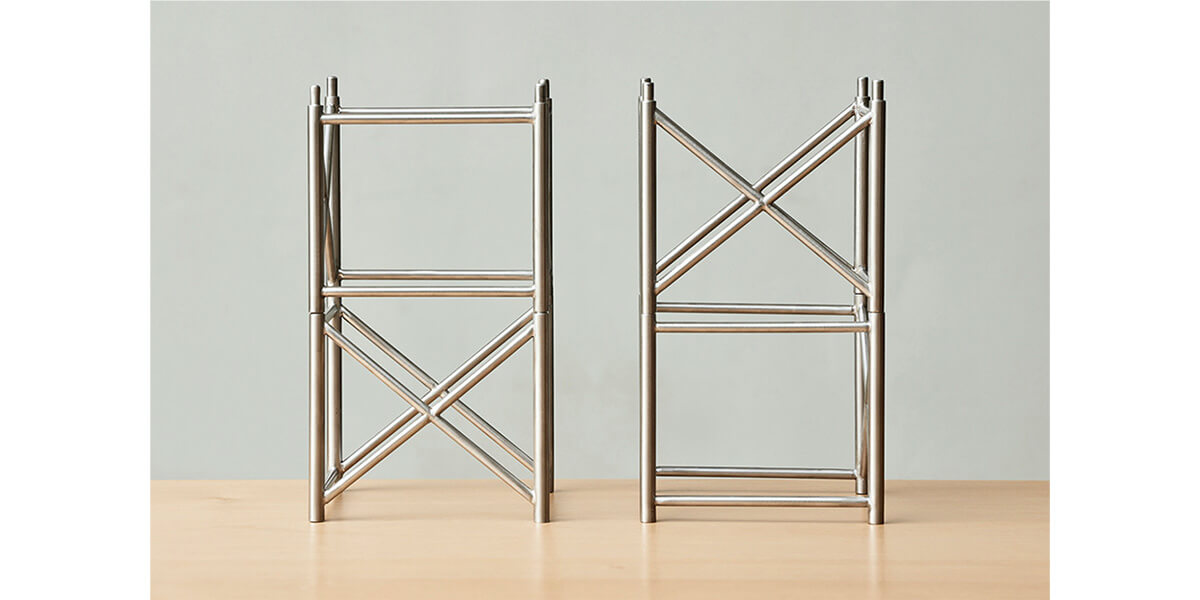
MODULES
2021
Stainless steel modules (18)
14 cm x 14 cm x 13 cm e/o

ROMPECABEZAS PERÚ
2019
Galvanized iron
90 35/64 X 94 31/64 x 1 31/32 in approx.
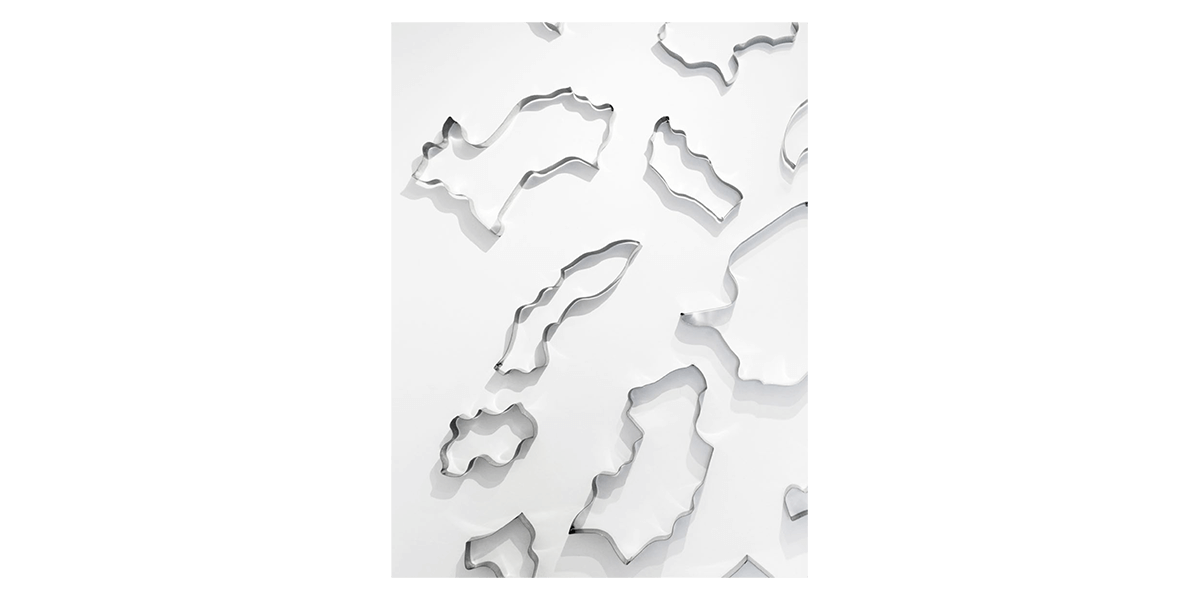
ROMPECABEZAS PERÚ (detail)
2019
Galvanized iron
90 35/64 X 94 31/64 x 1 31/32 in approx.

ADOBERAS
2019
Wood, adobe and sealing lacquer
78 47/64 x 17 21/64 x 3 15/16 in
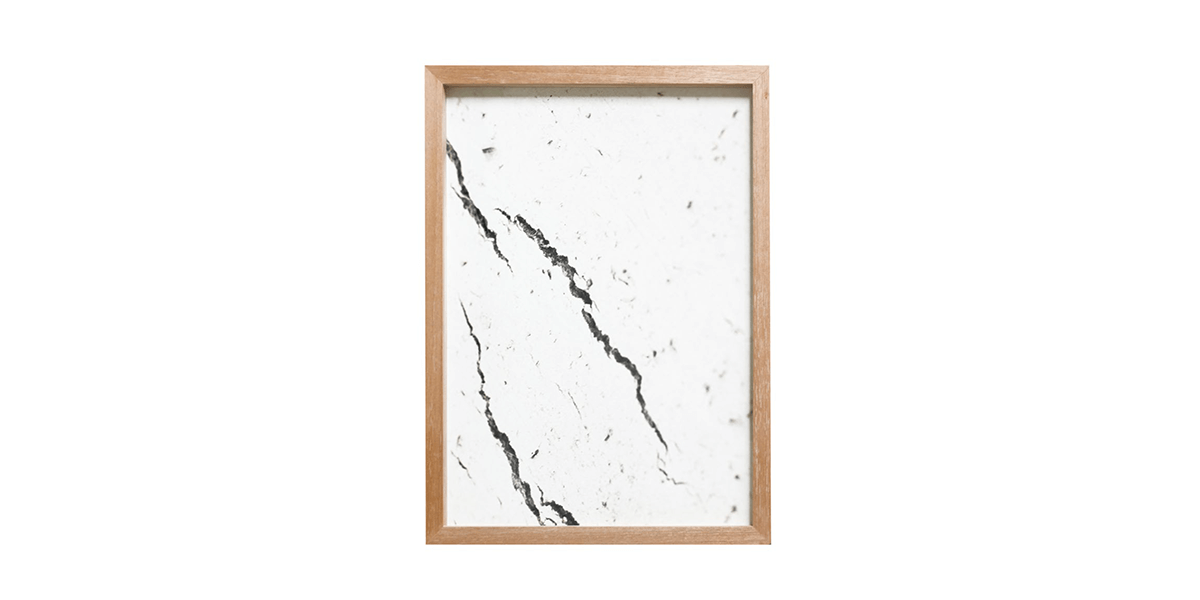
I. From the series ADOBERAS
2019
Photographic print on cotton paper
17 23/32 x 12 51/64 x 1 37/64 in each
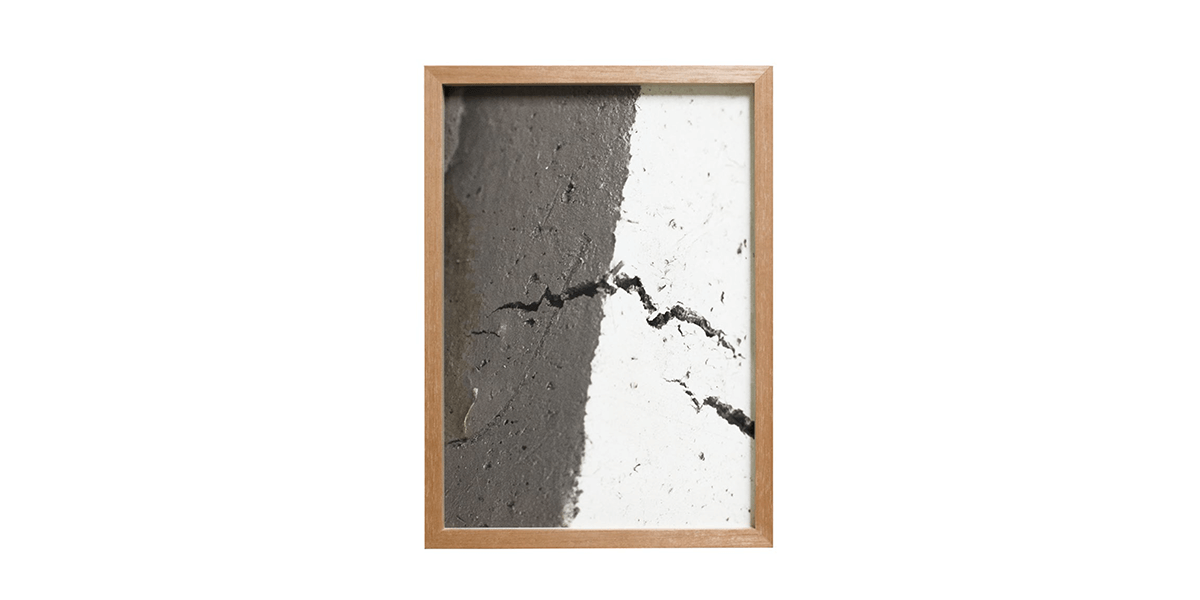
II. From the series ADOBERAS
2019
Photographic print on cotton paper
17 23/32 x 12 51/64 x 1 37/64 in each

III. From the series ADOBERAS
2019
Photographic print on cotton paper
17 23/32 x 12 51/64 x 1 37/64 in each
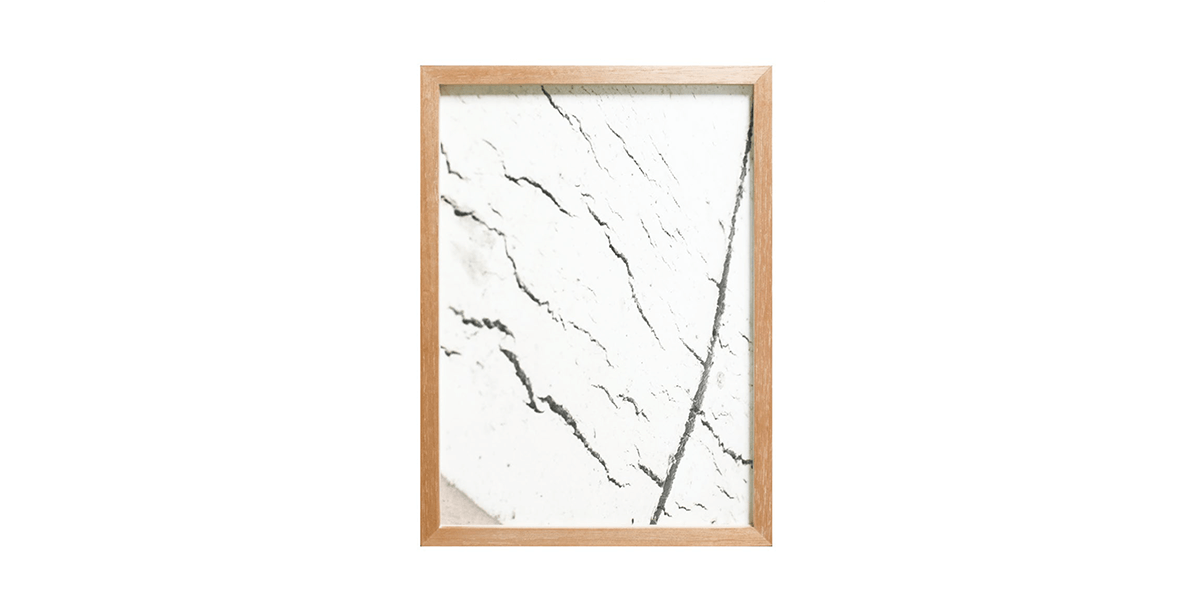
IV. From the series ADOBERAS
2019
Photographic print on cotton paper
17 23/32 x 12 51/64 x 1 37/64 in each

WINDOWS (installation)
2021
Woven in plastic raffia, copper, bronze and nylon, stainless steel anchor.
150 x 200 x 100 cm
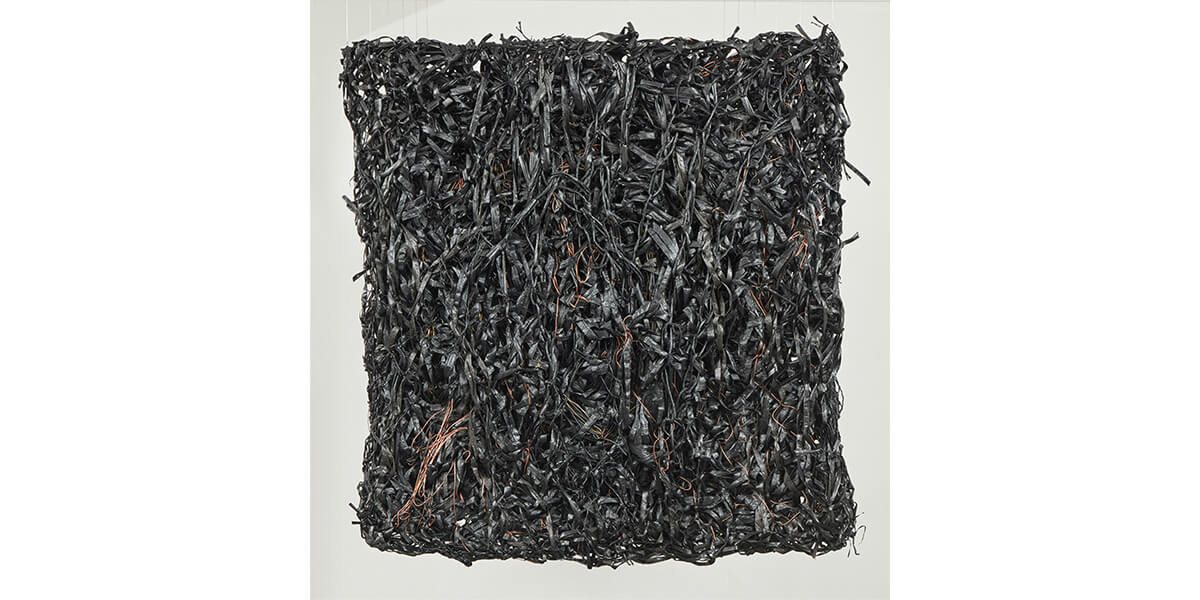
WINDOWS (installation)
2021
Woven in plastic raffia, copper, bronze and nylon, stainless steel anchor.
150 x 200 x 100 cm
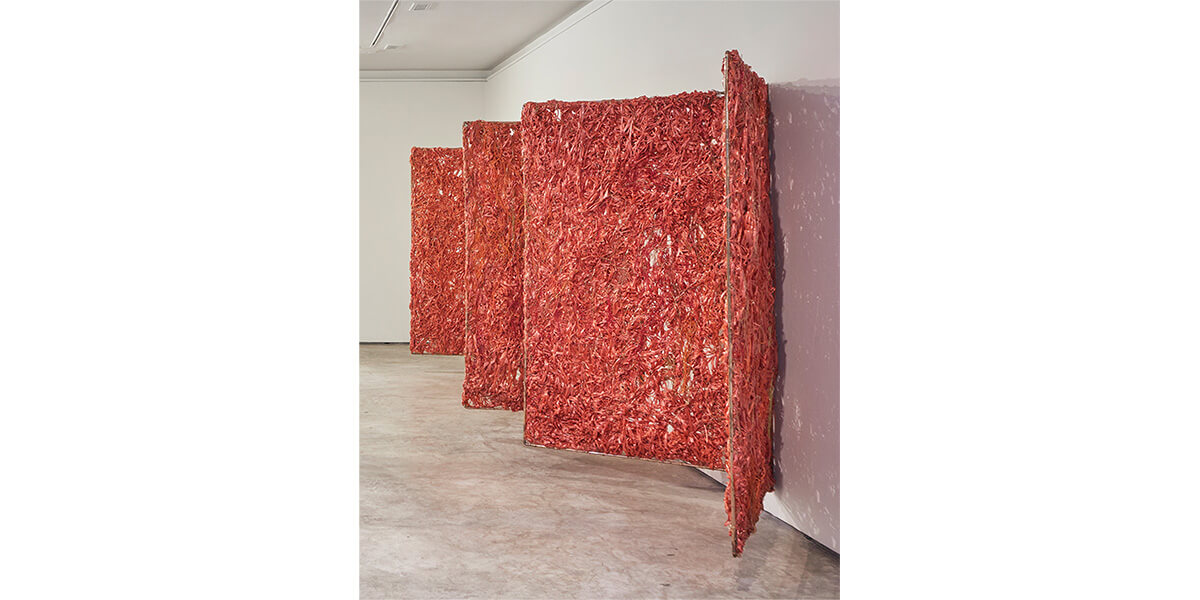
DOORS (installation)
2021
Five pieces installed with hinges and copper tubes, woven in plastic raffia, bronze and plasticized copper.
110 x 182 x 4 cm e/o
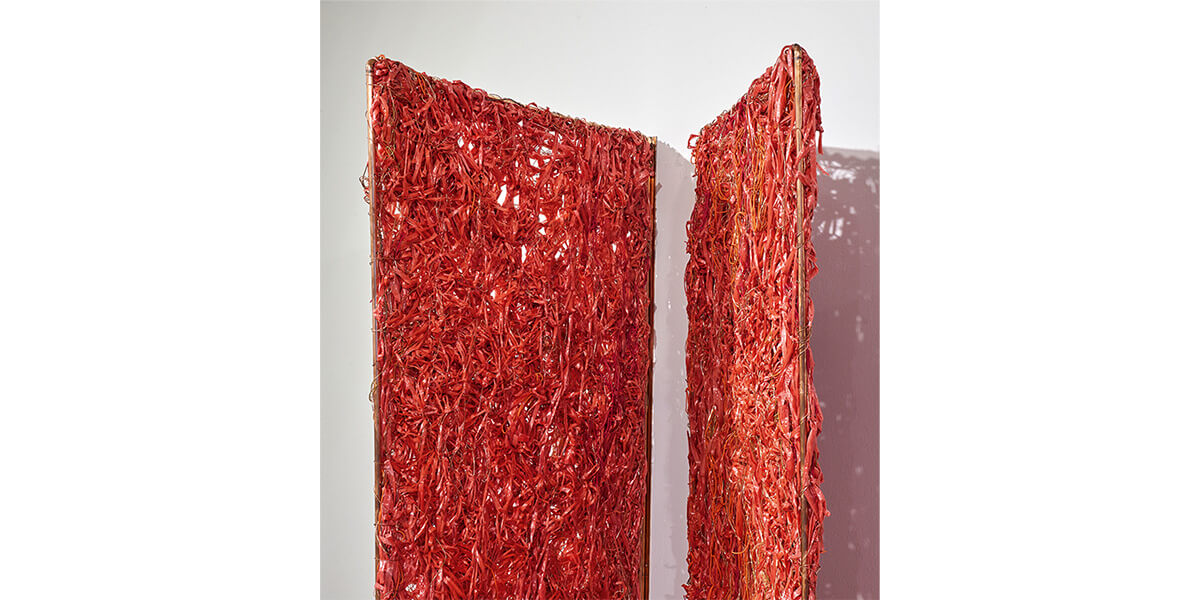
DOORS (installation)
2021
Five pieces installed with hinges and copper tubes, woven in plastic raffia, bronze and plasticized copper.
110 x 182 x 4 cm e/o
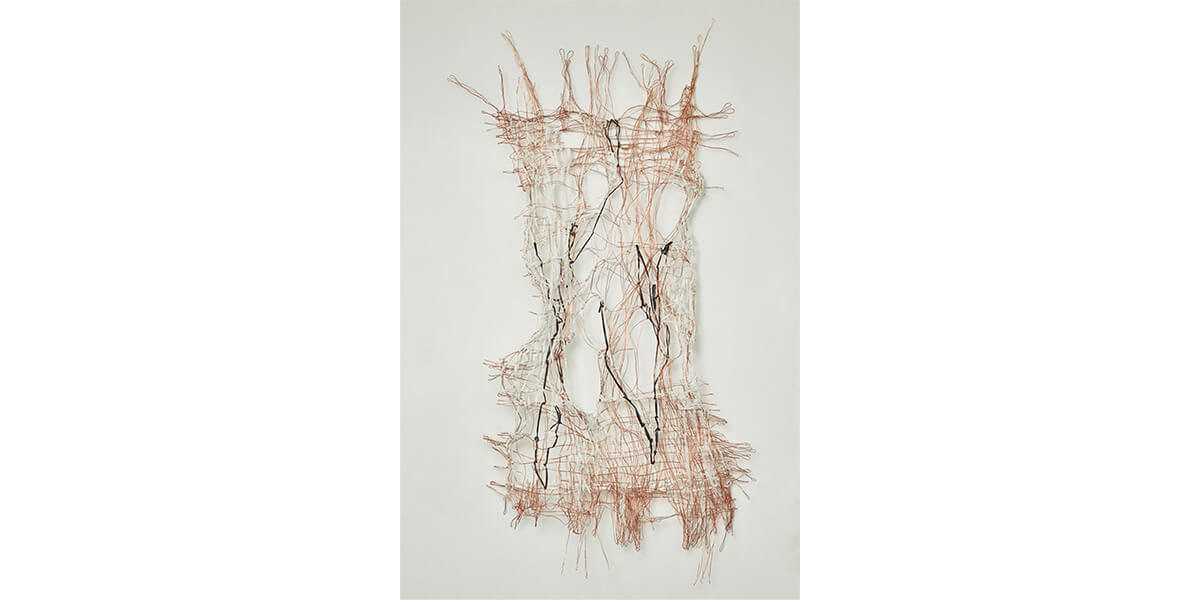
From the series PLASTERS
2021
Copper, bronze and plasticized raffia
Plaster II: 210 x 100 x 5 cm

From the series PLASTERS
2021
Copper, bronze and plasticized raffia
Plaster I: 265 x 104 x 5 cm
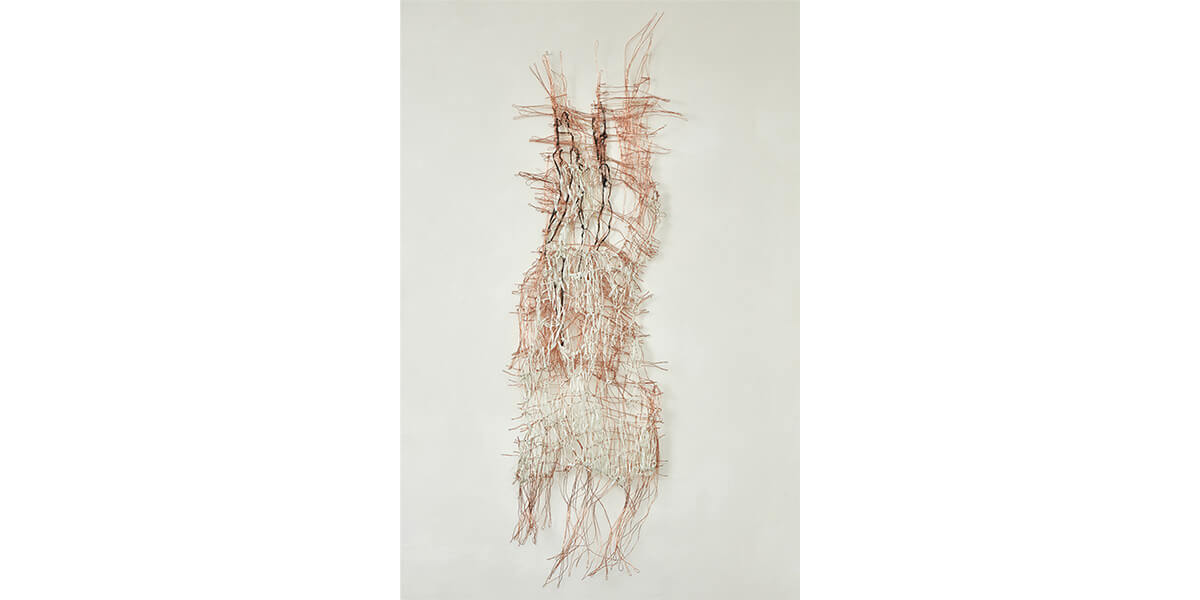
From the series PLASTERS
2021
Copper, bronze and plasticized raffia
Plaster I: 240 x 70 x 5 cm
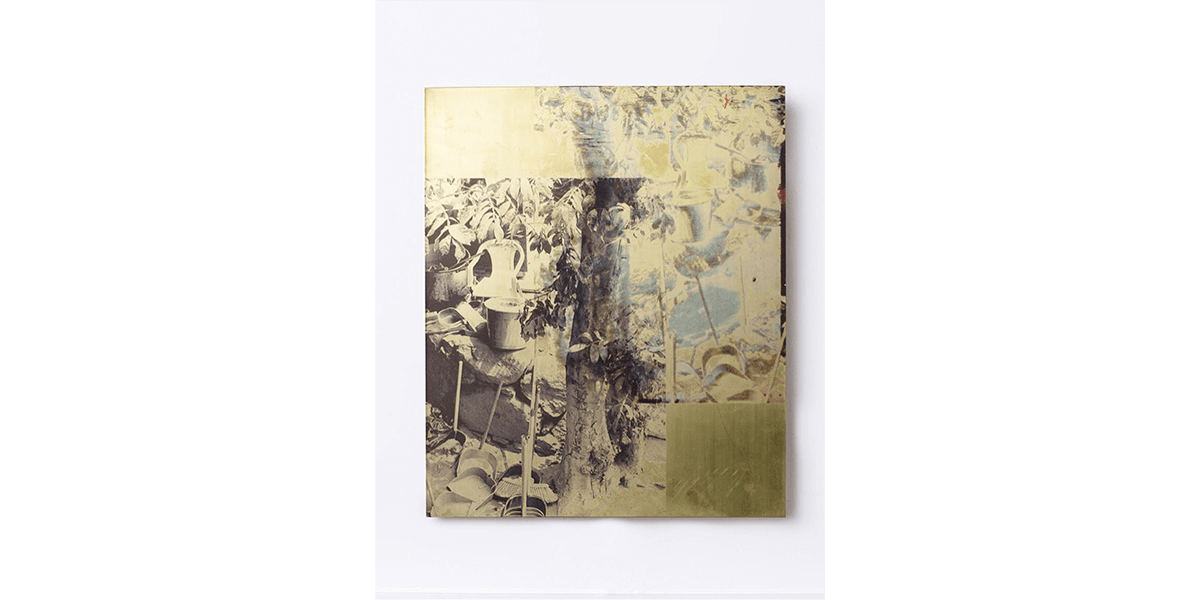
ÁRBOLES
From the series PALIMPSESTOS,
2019
Photographic print on bronze
11 13/16 x 15 3/4 x 0 25/32 in each
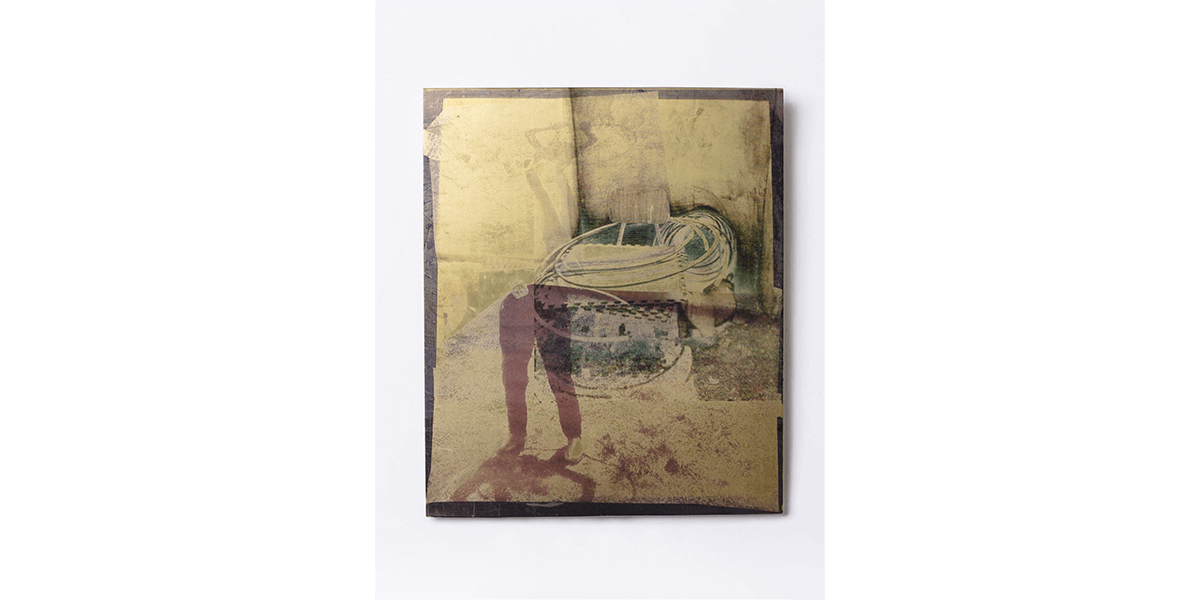
HULA HULA
From the series PALIMPSESTOS,
2019
Photographic print on bronze
11 13/16 x 15 3/4 x 0 25/32 in each
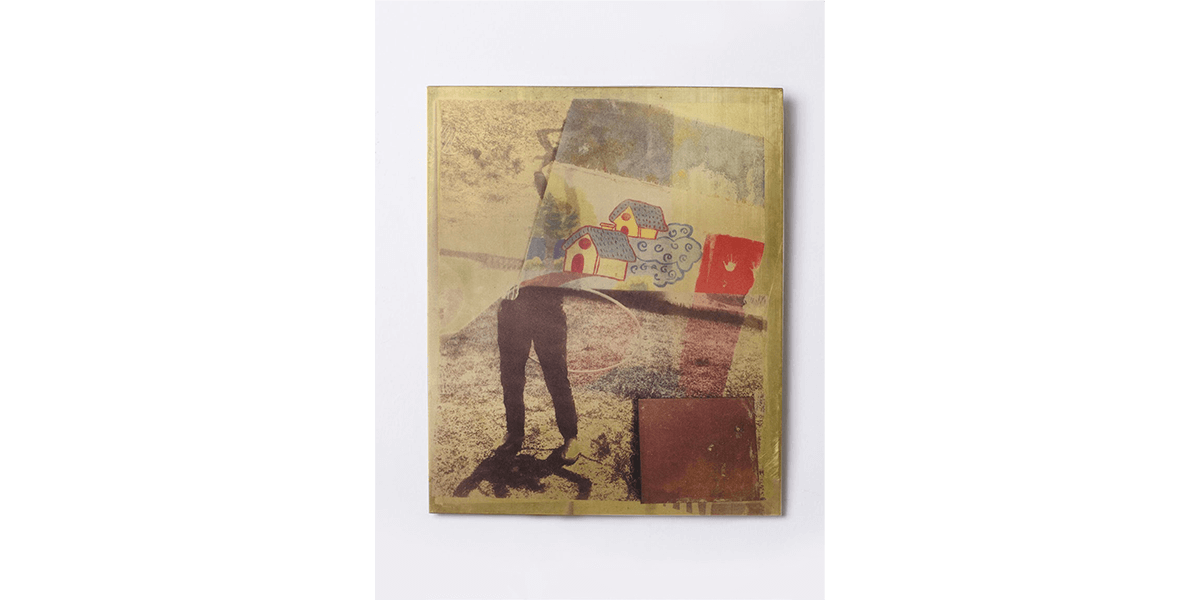
DOROTHY
From the series PALIMPSESTOS,
2019
Photographic print on bronze
11 13/16 x 15 3/4 x 0 25/32 in each

SALTARÍN
From the series PALIMPSESTOS,
2019
Photographic print on bronze
11 13/16 x 15 3/4 x 0 25/32 in each
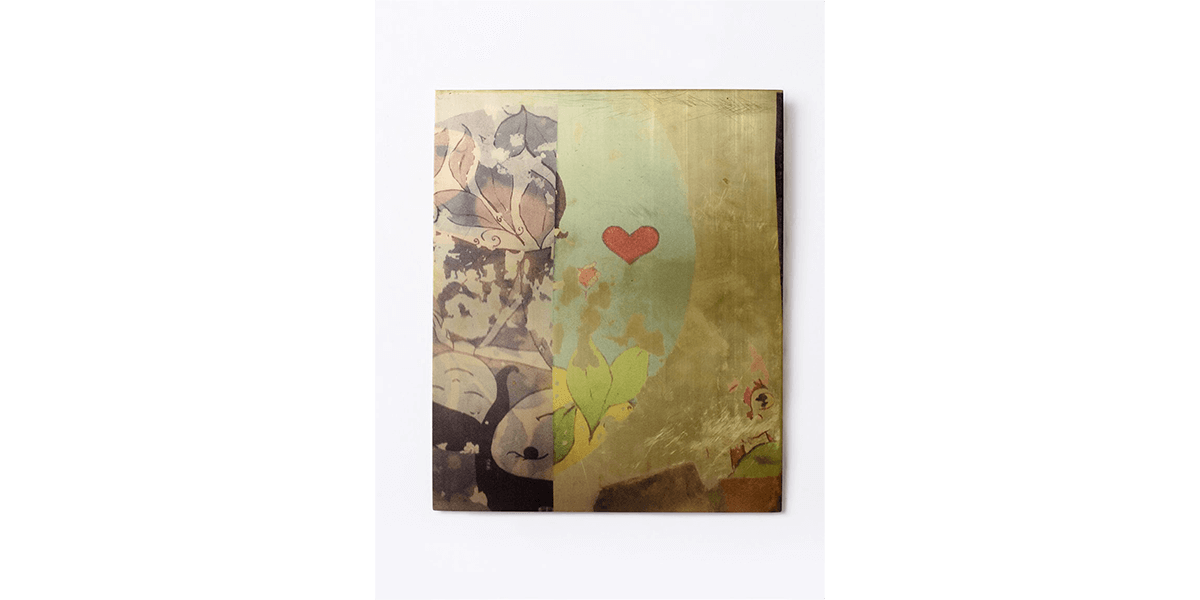
CORAZÓN
From the series PALIMPSESTOS,
2019
Photographic print on bronze
11 13/16 x 15 3/4 x 0 25/32 in each

EL DORADO
From the series PALIMPSESTOS,
2019
Photographic print on bronze
11 13/16 x 15 3/4 x 0 25/32 in each
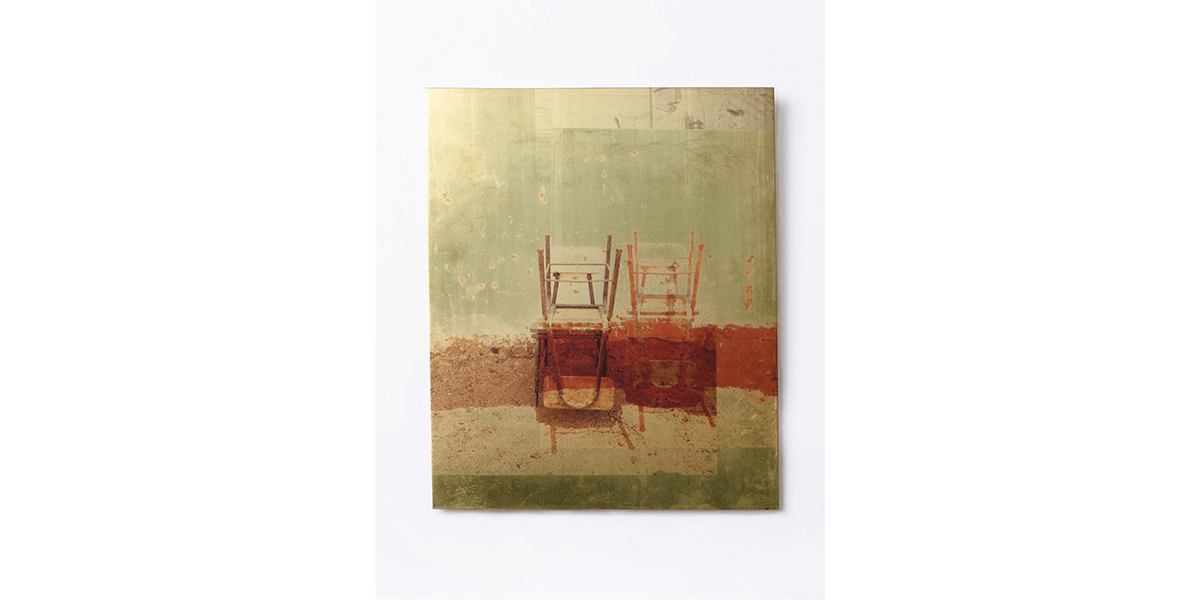
CARPETAS
From the series PALIMPSESTOS,
2019
Photographic print on bronze
11 13/16 x 15 3/4 x 0 25/32 in each
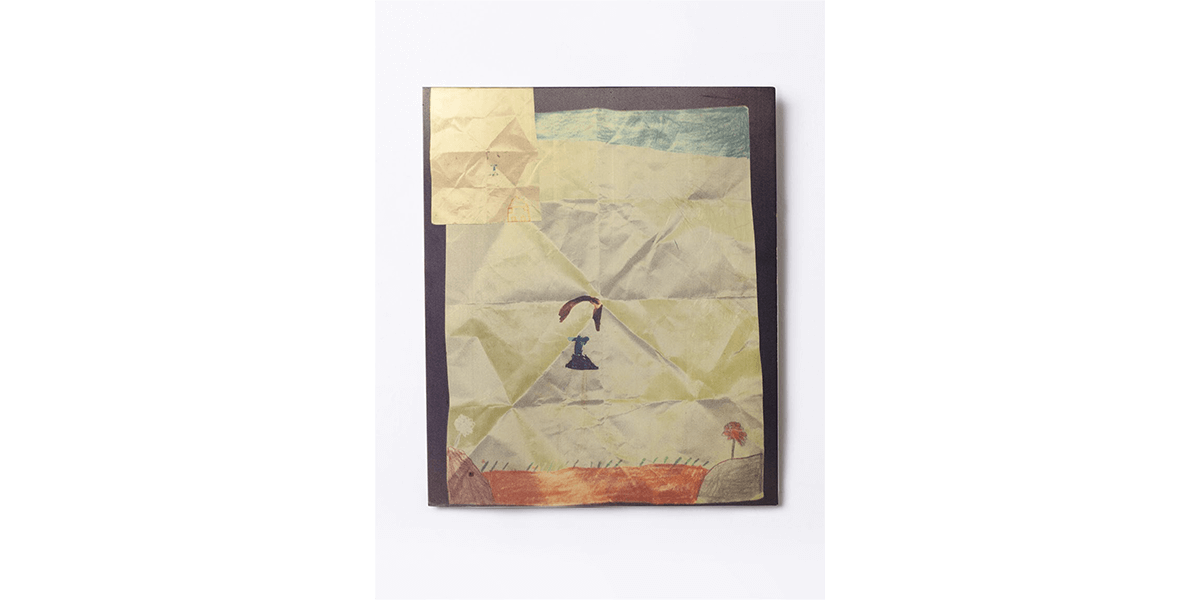
ORIGAMI
From the series PALIMPSESTOS,
2019
Photographic print on bronze
11 13/16 x 15 3/4 x 0 25/32 in each
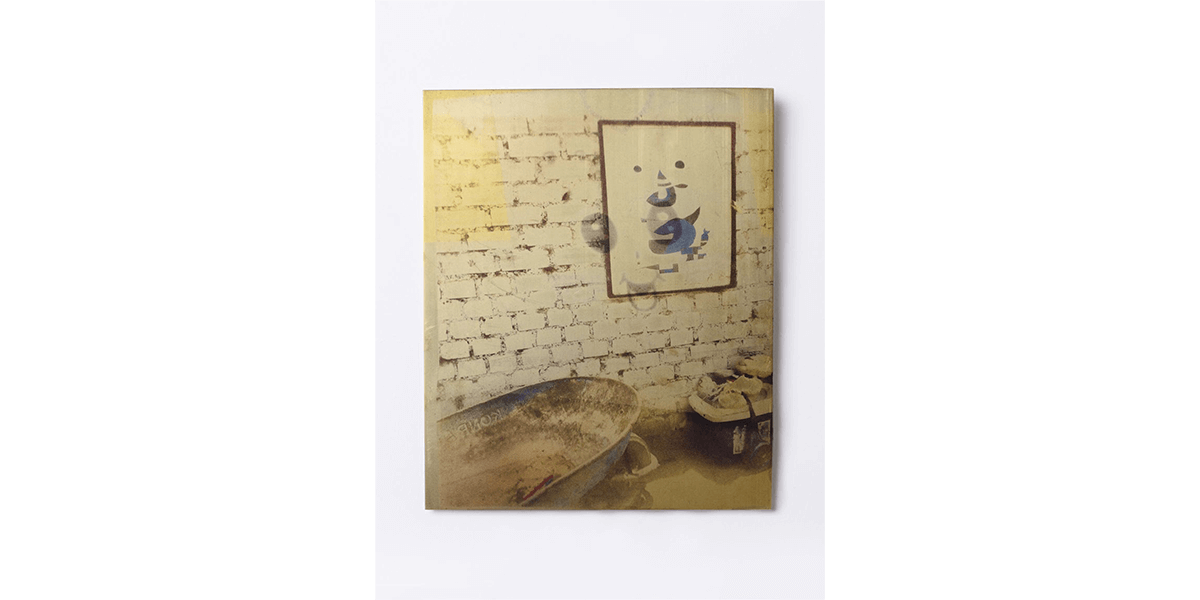
CARRETILLA
From the series PALIMPSESTOS,
2019
Photographic print on bronze
11 13/16 x 15 3/4 x 0 25/32 in each

CAPERUCITA
From the series PALIMPSESTOS,
2019
Photographic print on bronze
11 13/16 x 15 3/4 x 0 25/32 in each
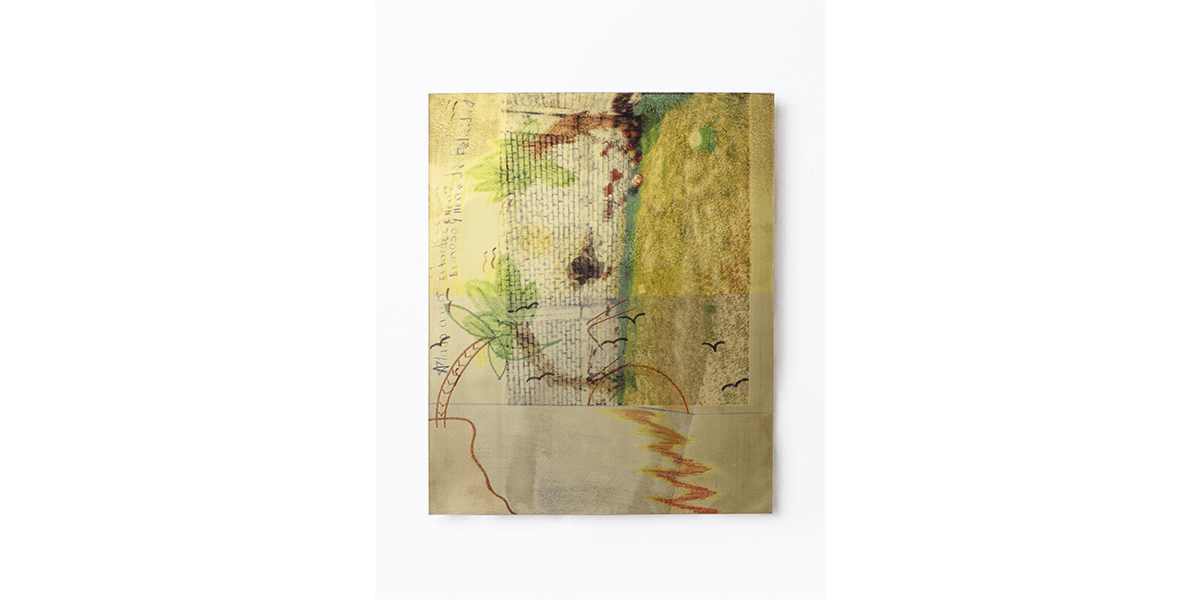
SUNSET
From the series PALIMPSESTOS,
2019
Photographic print on bronze
11 13/16 x 15 3/4 x 0 25/32 in each
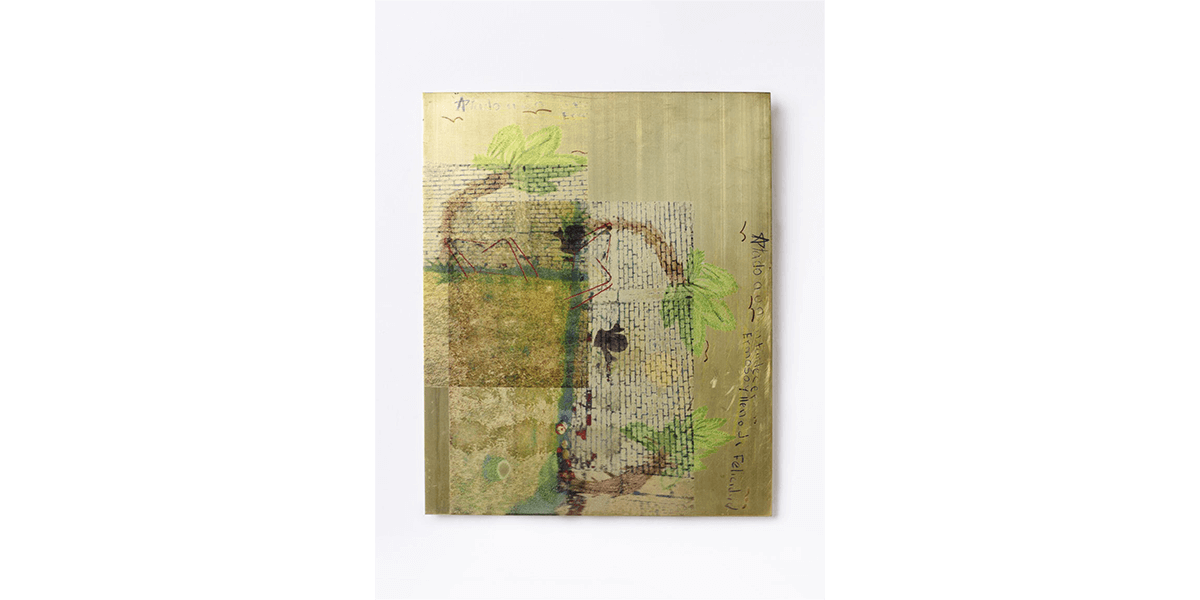
PALMERAS
From the series PALIMPSESTOS,
2019
Photographic print on bronze
11 13/16 x 15 3/4 x 0 25/32 in each


28.4-26.6.2021
Formas de habitar, the two-person exhibition by the artists Nani Cárdenas and Micaela Aljovín, opens a series of reflections on memory, identity, occupied spaces, the structures that sustain us, along with the possibility of building a common project; be it a house, be it a country.

Nani Cárdenas
Nani presents many layers of skin that —as symbols— become excuses to initiate a diatribe of needs, fears, emptiness and possibility. The artist uses painting and sculpture to weave pieces that emulate portals that refer back to the house. In this game of representation, she establishes a series of codes given by shapes and colors with which she prompts the visitors to recognize doors, windows and bodies, which hang floating in the gallery space. Fabric — like skin — exposes areas where materials contract and stretch, allowing light to pass through pore spaces. Thus, the shadows of the sculptural bodies arranged in series are projected in the exhibition space, remembering that it is light and darkness.
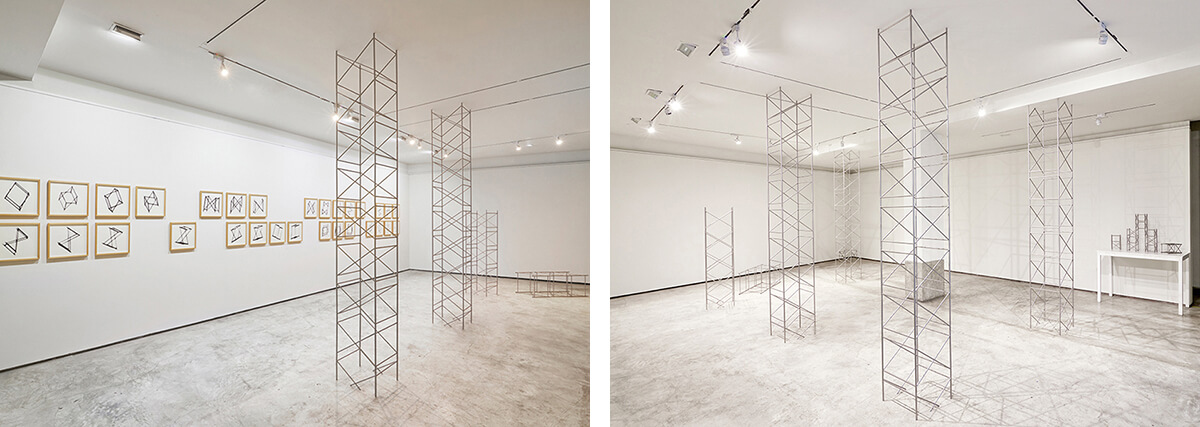
Micaela Aljovín
Engaging dialogue with reproduction, Micaela Aljovín presents a matrix piece —in the form of a scaffold— that will be the basis for the construction of a discourse that reveals fragility and puts the apparently solid in crisis. In a staging that reminisces modules one played with in childhood, five columns arranged symmetrically in the exhibition space simulate emerging from the floor through the ceiling. Without losing its playful character, she uses a module —which is none other than the reproduction of the matrix piece on a smaller scale— to record the projection of its moving shadow. The result is a series of 30 serigraphs that highlight the impossibility of building from individuality; at the same time that they invite the visitor to build a possibility.
--------------------
FORMAS DE HABITAR
Nani Cárdenas | Micaela Aljovín
The house ceases to be a concept. One must inhabit it in any possible way, co-existing day and night with all the beings it shelters. If it does not exist, it must be built —even precariously— in order to survive. The work is suspended for days, weeks, months. Fear paralyzes. Rituals are invented for the purpose of persisting. There are those who force themselves to acquire new practices and routines. Some people learn to make bread, others - hopefully - to eat only once a day. Quarantine is mandatory for everyone, but not everyone has the same obligations. Inequality is the protagonist of this pandemic.
When in February of 2020 Nani Cárdenas and Micaela Aljovín invited me to curate the two-person exhibition of Andamio, they were both eager to address the concept of ‘home’. No one imagined that a month later the WHO would declare the pandemic for covid-19 and Peru would declare itself in a state of national emergency and mandatory social isolation. The uncertainty lodged in all the corners. The interests of the artists mutated according to the needs and impulses that arose in the confinement, in the reencounter both with the space and with themselves. There were more questions than answers, they still remain.
Formas de habitar is the result of a continuous dialogue that was carried out for months, with theaim of answering some of the questions that arose along the way. The possible answers became material in the hands of the artists.
Nani Cárdenas presents many layers of skin that —as symbols— become excuses to initiate a diatribe of needs, fears, emptiness and possibility. The artist uses painting and sculpture to weave pieces that emulate portals that refer back to the house. In this game of representation, she establishes a series of codes given by shapes and colours with which she prompts the visitors to recognize doors, windows and bodies, which hang floating in the gallery space. The serial reproduction of these elements evokes a return to the origin - even if the original is non-existent - in an effort to (re) meet the primitive that nests within oneself and that is projected outside. Cárdenas will name them: “Doors”, “Windows” and “Plasters”. The result will be a display of lighted doors that open and close; dark windows that project to infinity; and bodies in motion. Since plaster is one of the primary materials for sculpture -as it refers to antiquity- and with which molds or pieces are created through the casting technique, it is not by chance that the artist endows with this name what she conceives as a body. Thus, she exhibits three woven pieces in which the white raffia forms a weft with the warp made up of copper and bronze threads, and in which the black raffia interferes - as subtexts, until occupying certain areas that could even be a hint at the human form.
Through the fabric with raffia, copper and bronze, Nani Cárdenas tries to immerse the viewer in the intensity of the color (red, black and white) and in the original line that is knotted in the desire to be body, mass, depth. Fabric — like skin — exposes areas where materials contract and stretch, allowing light to pass through pore spaces. Thus, the shadows of the sculptural bodies arranged in series are projected in the exhibition space, remembering that it is light and darkness.
Engaging dialogue with reproduction, Micaela Aljovín presents a matrix piece —in the form of a scaffold— that becomes the basis for the construction of a discourse that reveals fragility and puts the apparently solid in crisis. In a sta- ging that reminisces modules one played with in childhood, five columns arranged symmetrically in the exhibition space simulate emerging from the floor through the ceiling. Their appearance generates the optical illusion of being safe and resistant structures, which support both the gallery and the building that stands above it. However, the volume, consistency and flexibility of the material that makes up each of the pieces that are set to raise the columns shows its fragility, exposing the artifice and the possibility of fracture.
Contemplating these probable fissures, Aljovín intends to study the object from all its angles in search of assurances. Without losing its playful character, she uses a module —which is none other than the reproduction of the matrix piece on a smaller scale— to record the projection of its moving shadow. The result is a series of 30 serigraphs that expose, on one hand, the impossibility of building a superior structure from individualism; and on the other, how a movement - however simple it may seem - can change the perspective of both the object and the observer. For this reason, the linear arrangement of the serigraphic series on the wall demands, in turn, the movement of the viewer as a metaphor for the construction of space.
Finally, the artist sets out a table where she presents 18 modules to be manipulated by the public, the purpose of the game being to imagine and build different forms. Thus, “Columns”, “Modules” and “Shadows” make up a manifesto, through which Micaela Aljovín questions not only the structures inherited, learned, acquired and / or imposed over the years, but also the possibilities of generating links.
The constant repetition in both proposals drives us to think of the simulation, as a need to restate the body-work-of-art that inhabits the exhibition space: it is a body and occupies a place in the space. At the same time, the simulation leads us to think about the simile, since the exhibited objects appear to be something that they are not, but which, due to their forms, become recognizable upon the viewer’s gaze. Thus, the simulation mechanism ends up configuring the meeting point for the proposals of Nani Cárdenas and Micaela Aljovín. While one reproduces portals that refer to the house —in the attempt to build memory and identity—, the other reproduces serial pieces that show the difficulties that society faces in building a collective project given the fragility of the structures that support it.
Formas de habitar opens a series of reflections around memory, identity, occupied spaces, the structures that support us, as well as the possibility of building a common project; be it a house, or a country. In this way, it brings together two opposing and complementary glances that suggest seeing through, sensing questions or answers between shadows, perhaps a path, a new space, or ways of living.
Luisa Fernanda Lindo – Curadora
Abril, 2021
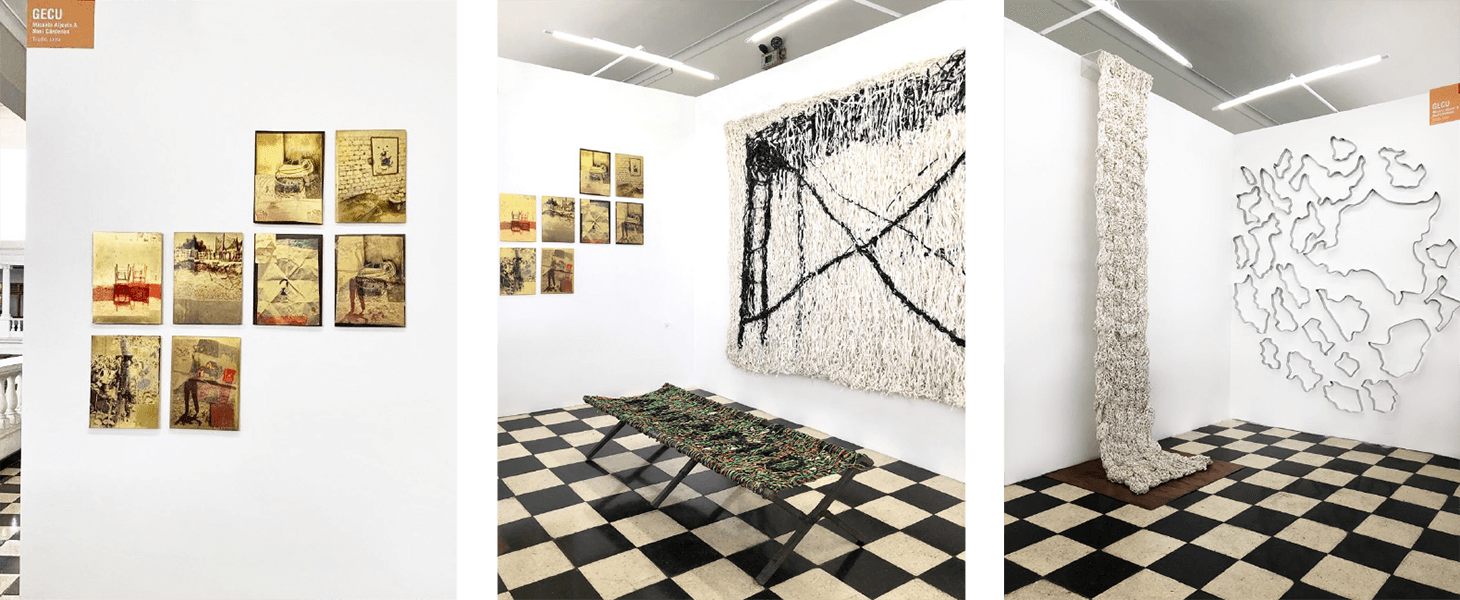
12.-18.4.2019
Is Peru an integrated society? Can we construct a unified project as a country? Are we really capable of empathizing and picturing ourselves in someone else’s position? Creating a series of collective and individual pieces, Nani Cárdenas and Micaela Aljovín reflect and channel these inquiries through their project Andamio.
Their collective work is woven in “rafia”, a material used to make practical objects such as nets and bags. Nevertheless, the material inevitably acquires a unique and wholesome beauty. The pieces also allude to an ancestral practice in Peru: textile making. The embroidery itself resembles a large feathered blanket. Moreover, it portrays the idea of construction - the process of interweaving fibers as an image of a social body in its way to achieve a common goal. The technique strengthens the concept behind the pieces: construction, union and support.
Overall, the artworks picture the possibility of a country that has been able to build, construct and create in such ragged conditions but is yet still fragmented and has many unresolved issues. Furthermore, their work calls upon the reflection of the spectator, regarding the links and values that we construct in order to contribute to an integrated Peru as it is seen in cartographies.
Gabriela Germaná
Art historian and curator
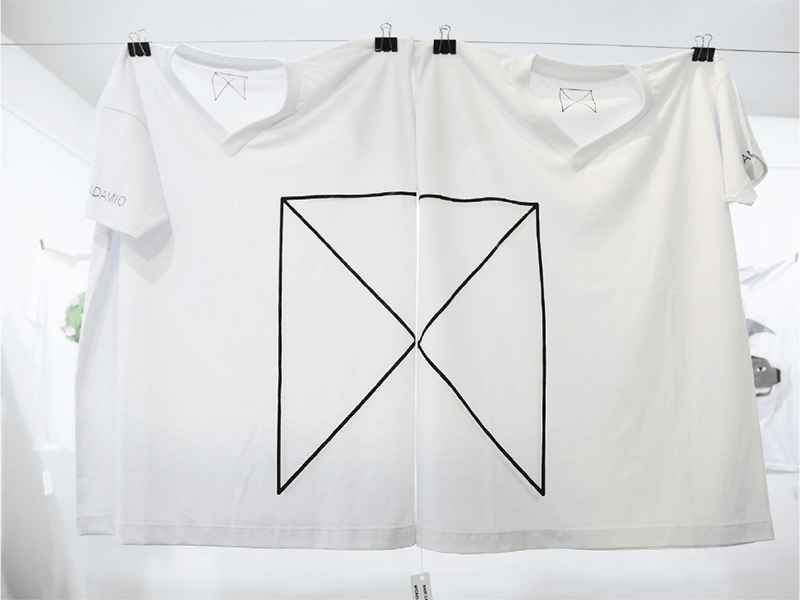
Collective exhibition, Peru-Road to the Bicentennial, III Task: Put on the T-shirt.

León Pinelo School
Collective exhibition organized by the artist Rhony Alhalel to support the 4010 school in Callao.

The Andamio workshop is a space for dialogue and sharing processes.
We have an exhibition space for both individual and collective work creation.
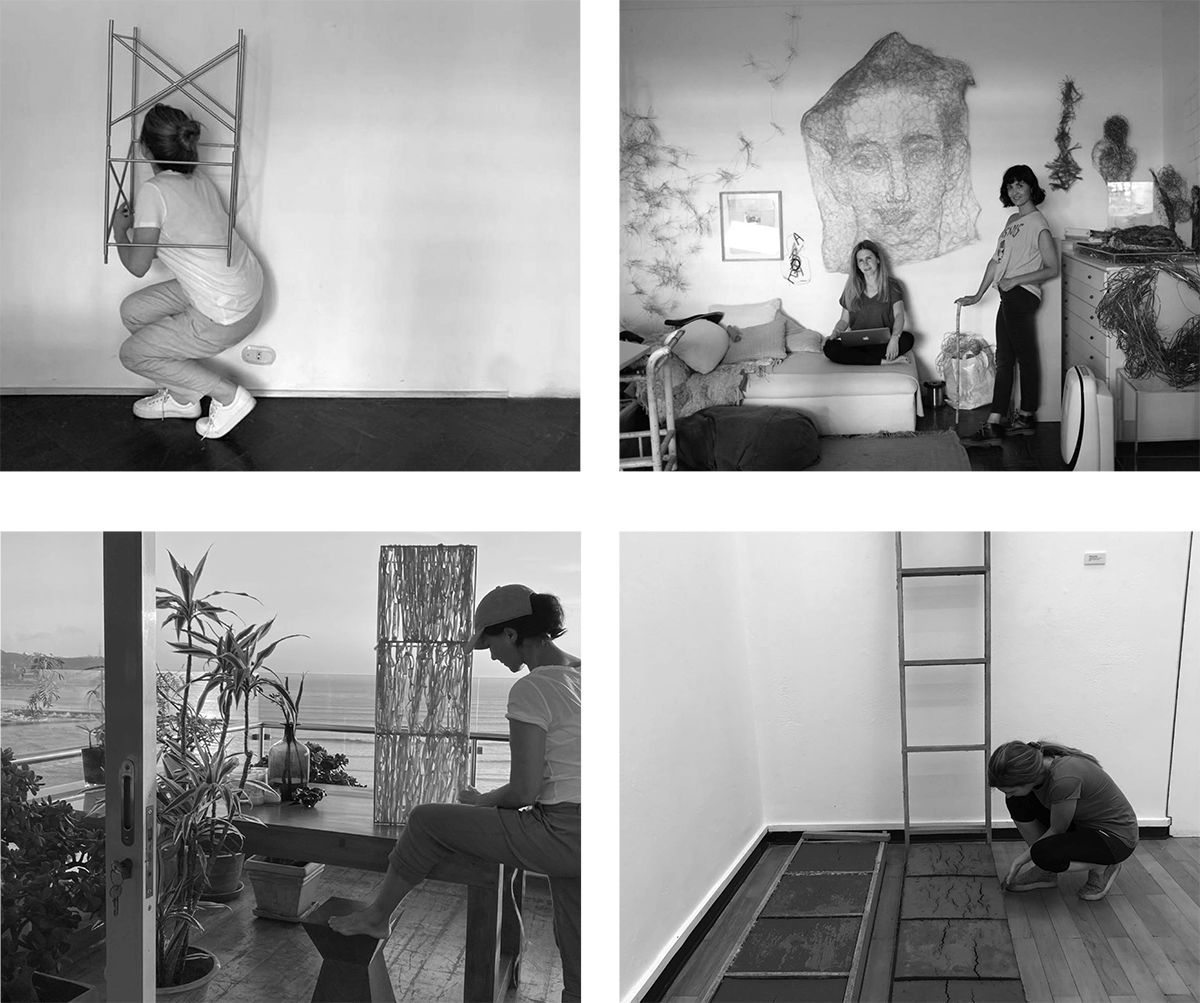
EXPLORACIÓN TEXTIL 2023 / ÁNIMAS / DANIELLA PAZ
Elastic, fabric, and weave.
Tales of persistence, rhythm, and color.
The idea of the unfinished that, depending on how you see it,
may not be so.
For leaving loose threads and emptiness
opens doors to new stories and rhythms,
Leaving room to dreaming and projecting.
An infinite journey.
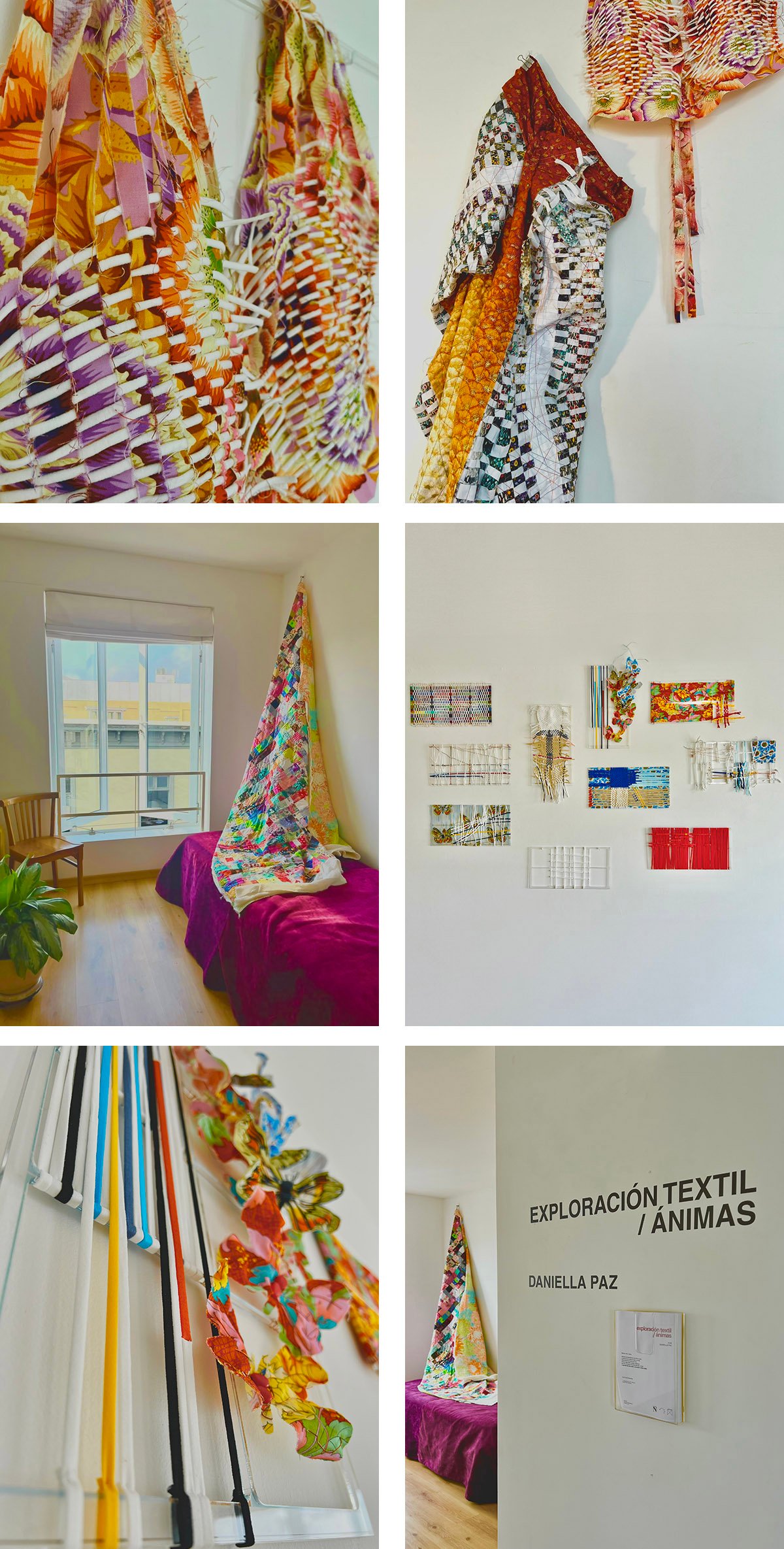
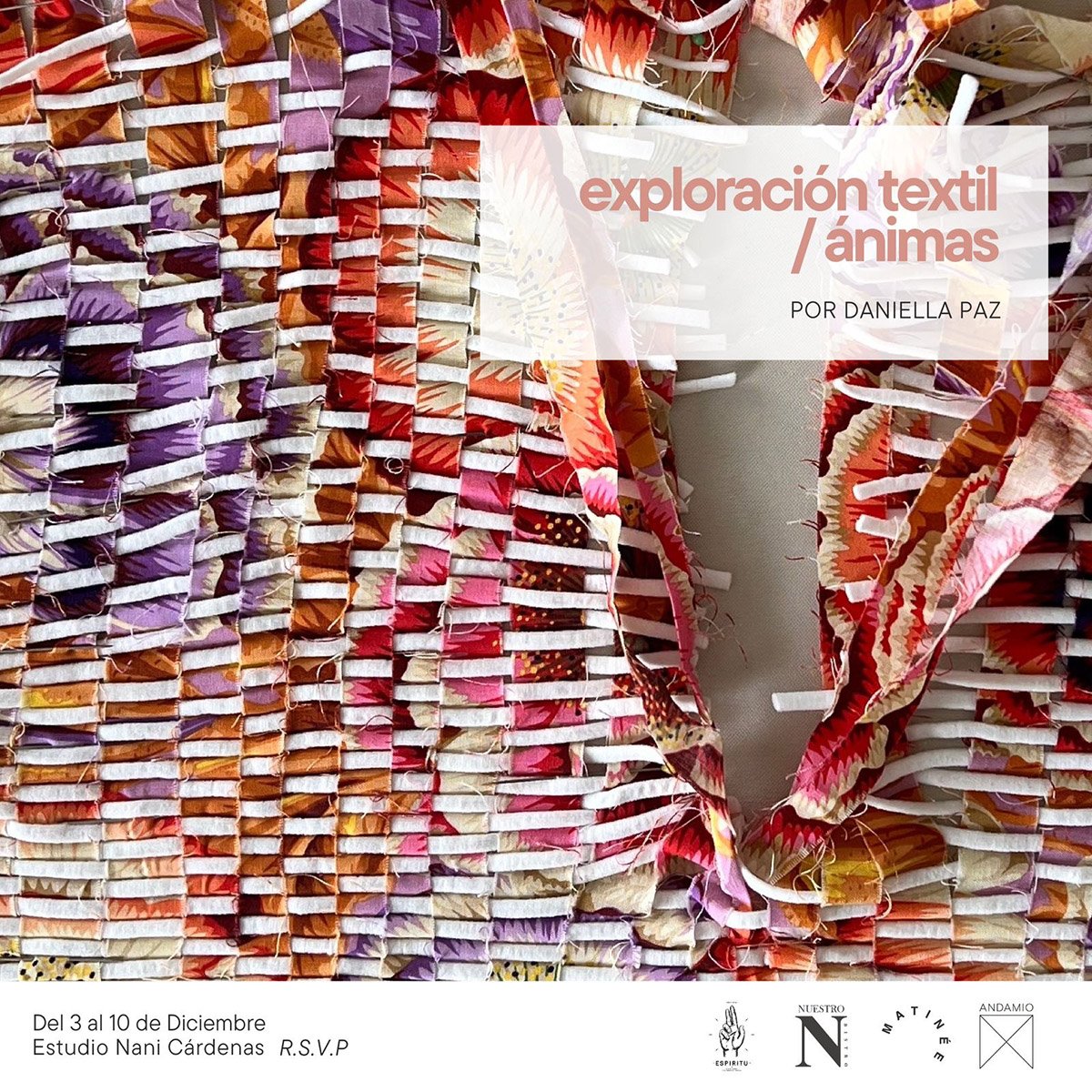

RESIDENCE 2020
Symbiosis presents the process of reflection, experimentation and creation developed by the artist Alejandra Ortiz de Zevallos during her two months of artistic residency at Andamio, the art platform founded by the Peruvian artists Micaela Aljovín and Nani Cárdenas.
This process, carried out in the midst of a health emergency due to the pandemic generated by covid-19, exposes the artist’s reflection on her own condition of being fluid and of becoming one with nature through the action of weaving, which counteracts the cover. Thus, the sketches and resulting pieces are presented in the form of dialogues that the artist establishes with a previous experience –experience and community work– and with the material rescued from the underground waters of the Surco River, invisible to the eyes of those who pass through the fragmented cement city that insists on denying its own nature.
Luisa Fernanda Lindo
--------------------
www.elcomercio.pe/luces/arte/el-rio-profundo-noticia/
www.alejandraodzr.com/simbiosis-2020
--------------------
ALEJANDRA ORTIZ DE ZEVALLOS
SIMBIOSIS
Symbiosis comes from the Greek symbíõsis (life in common) and refers to the natural process that occurs through the association of different organisms or species. Although there are five types of symbiosis, not all are beneficial for both parties; For this reason, the most fruitful is mutualism, the one in which both parties benefit each other in their vital development. Likewise, the word refers to the mutual help or support that is generated between two people or entities when they do something in common.
Symbiosis presents the process of reflection, experimentation and creation developed by the artist Alejandra Ortiz de Zevallos during her two months of artistic residency at Andamio, the art platform founded by the Peruvian artists Micaela Aljovín and Nani Cárdenas.
This process is part of the Surcosonante project that Ortiz de Zevallos carried out alongside the audiovisual artist Josué Arispe between May and September 2019.
Surcosonante consisted of traveling the 29 km of the Surco River, from its channel in the Rímac River (Ate) to its ending at La Chira Beach (Chorrillos), with the purpose of making a visual and sound record to reveal the vital condition of the channel. They sought to rescue a river that runs through part of the city, like the veins that pass under the skin, but which has been reduced and forgotten. Thus, both artists projected listening as a way of sensually approaching the flows of the Surco canal to explore new ways of inhabiting and relating to the territory and to the bodies of water that are hidden under the cement. To complement this experience, they devised a collaborative work, as a community fabric –through workshops and interviews– with two groups of neighbours located at the ends of the canal: the AAHH Víctor Raúl (Chorrillos) and the Amaru Yupanqui park (Santa Anita). The result was the animation El viaje de Esperanza and the documentary Surcosonante, which exposes the collective perceptions and memories of the members of both neighbourhoods around the water of the Surco River.
Based on the experience of the community fabric, during the residency held in the middle of a health emergency due to the pandemic generated by the covid-19, Alejandra Ortiz de Zevallos explores the possibilities offered by the action of weaving, which will be predominant in this process: from the weaving made with the reed leaves, up to the photographic record of her own skin whose texture she exposes sustained on a brick. In this way, she reflects on this action as contrary to the concealment or censorship that occurs due to the action of covering up.
For this process, she has a series of elements rescued from the channel of Surco to analyze them, perhaps auscultate them, and establish with them a new link that allows her to generate another story: a reed stem, dry reed leaves, dried plants and flowers harvested from banks of the river, visual and sound images, as well as annotations and a logbook - which could well be a book-object - in which the artist uses drawing and text to relate her daily discoveries. In addition to natural elements, the exploration starts from drawing and experimentation with materials that emulate water, such as plastic transparencies, with which the artist plays, photographing, scanning, constructing new cartographies that direct her towards her own skin. Thus, the external journey that proposed a soundscape of the city turns into an internal journey that transits within one’s own being and that requires lowering one’s gaze to recognize the territory that is being travelled.
Moreover, Ortiz de Zevallos presents the work in the process of a sculptural piece made from the weaving technique with the dried reed leaves taken from the Parque de La Cruz Surcana. Deprived of a preconceived form, the artist uses the rope weaving technique, learned with the artisans of the Moray community in Cusco, with whom she developed a collaborative work in February 2020, to build an organic body that is shown as a tissue / nest that can change its shape but could also emulate a vital organ.
Finally, a video is projected in which a landscape is interwoven and is discovered from the repetition of the plot. The images are none other than the flows extracted from the channel, which the artist seeks to represent as a living tissue that could be perceived as perennial, but which requires getting closer in order to be recognized. Thus, through the subterranean sound of water, Ortiz de Zevallos proposes the recognition of being in this flow of the bodies of water that occupies the exhibition space, as a white noise that is not necessarily perceived consciously.
If the previous experience embodied a body of experiential and community work, where the action of listening was proposed as a contrast to covering up and forgetting, with the aim of recognizing and rediscovering the vital condition of the river; This second part of the process, which corresponds to the residency carried out in Andamio, exposes the artist’s reflection on her own condition of being fluid and of becoming one with nature through the action of weaving, which counteracts covering. Thus, the sketches and resulting pieces are presented in the form of dialogues that the artist establishes with that previous experience and with the material rescued from the underground waters of the Surco River, invisible to the eyes of those who pass through the fragmented city of cement that is stubborn in denying its own nature.
Luisa Fernanda Lindo – Curator
Agosto 2020
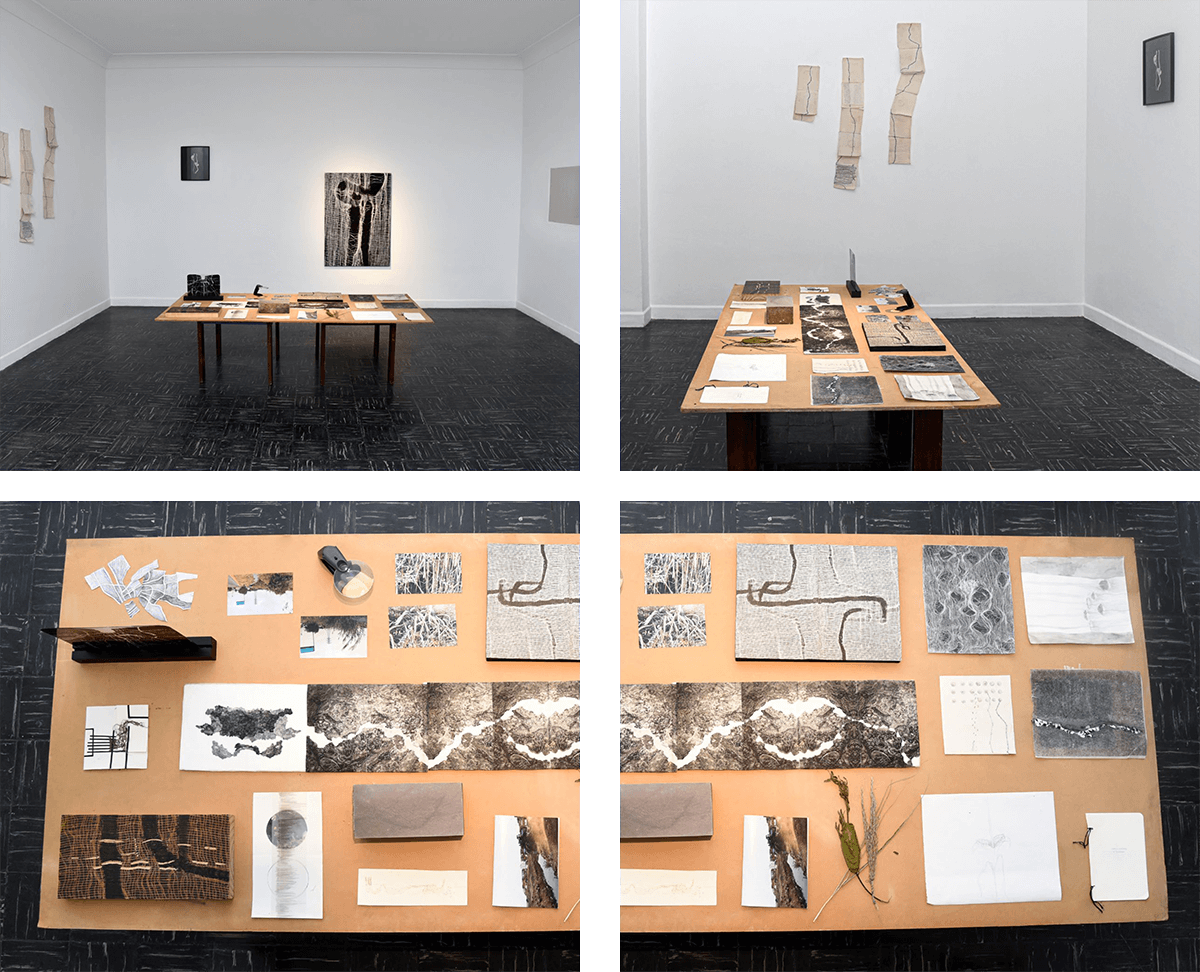
RESIDENCIA 2023-2024
CHILCA/DIANA LOSTAUNAU
Diana Lostaunau García. Lima, 1988.
Architect, graduated from the Faculty of Architecture and Urbanism at Ricardo Palma University. Artist by vocation.
CHILCA is the result of an analytical and sensory process during her residency at Andamio from November 2023 to March 2024.
"I always return to Chilca. Despite the fact that it is now seen as a site museum, I always perceived it that way, even when it was a familiar and inhabited space. I find beauty in what is incomplete. The desire to build the absence." Diana Lostaunau García
What are the objects that Diana observes? A hammock, algae in an abandoned pool, a disused motor part, blackened logs, among others. She then transforms them, creating light from what has been burned, reflections from the hammock, and new plant life from the formwork of that disused motor.
Presented here is a mature and reflective work that, through subtle elements, she recreates a place to which she will always return.
She becomes one with the landscape, where CHILCA could be taken to exist anywhere.
Micaela Aljovín / Nani Cárdenas
Lima, 2024
--------------------
--------------------
